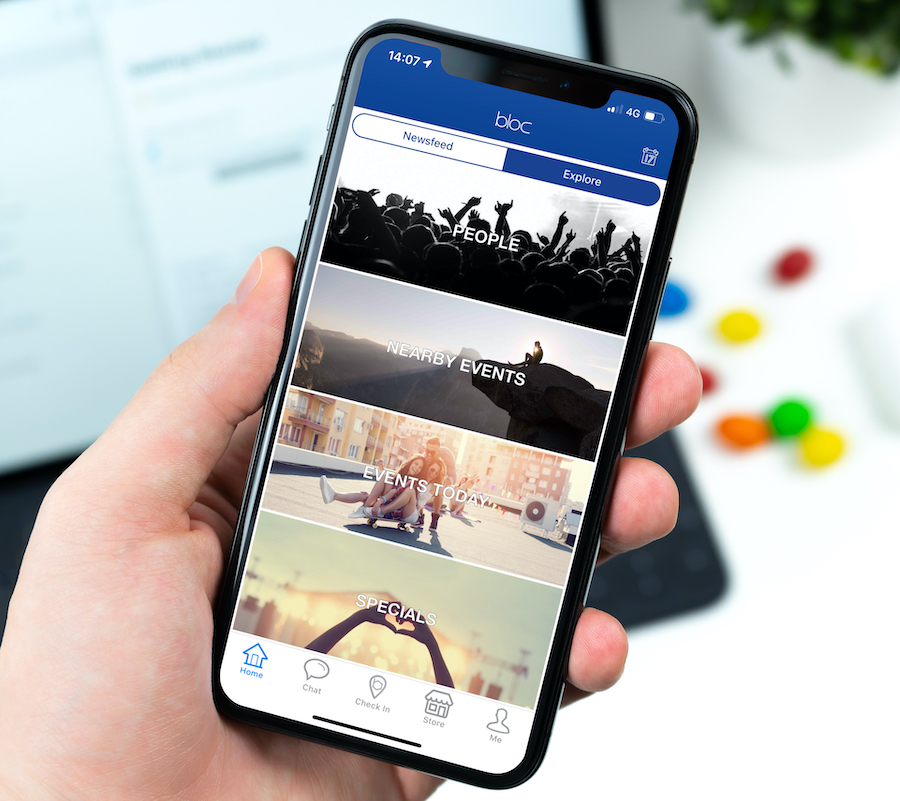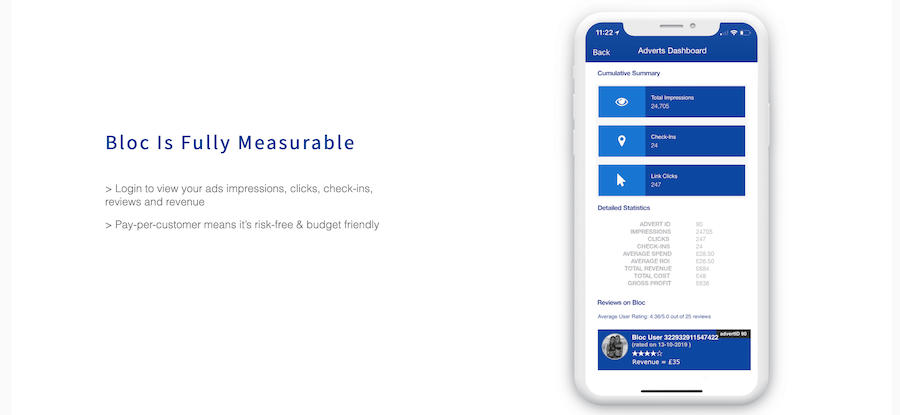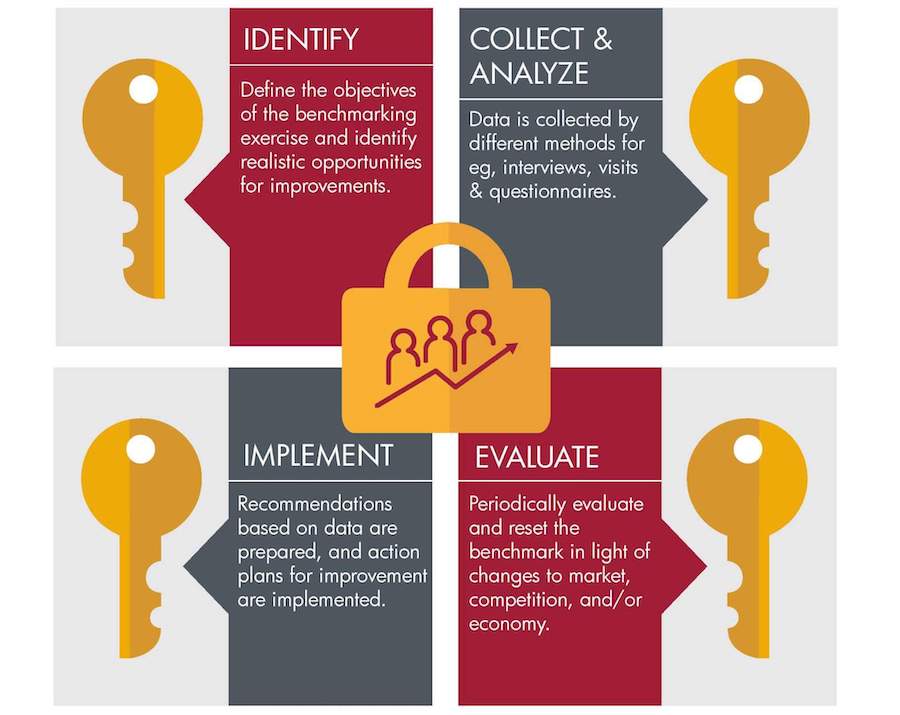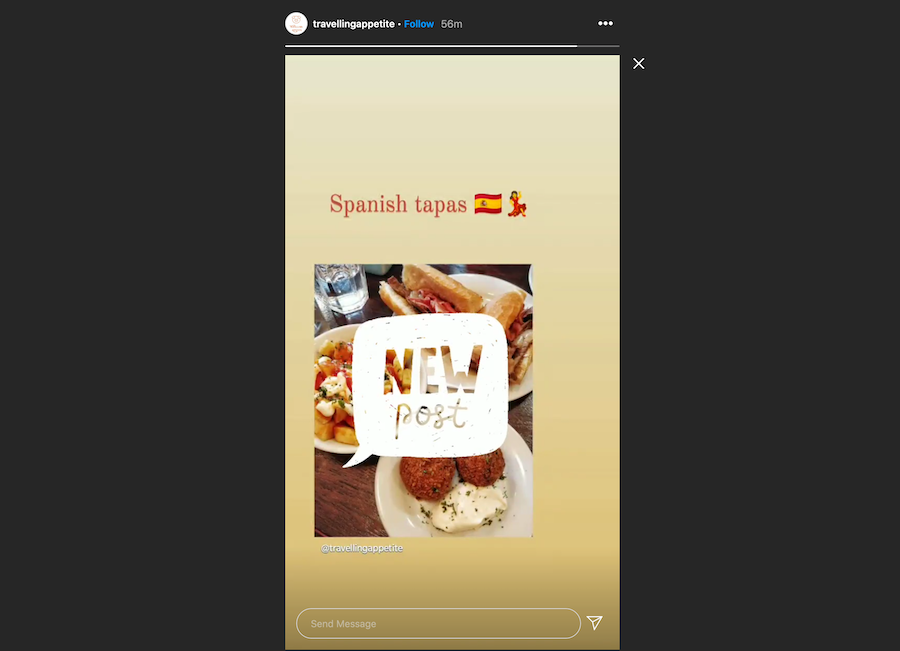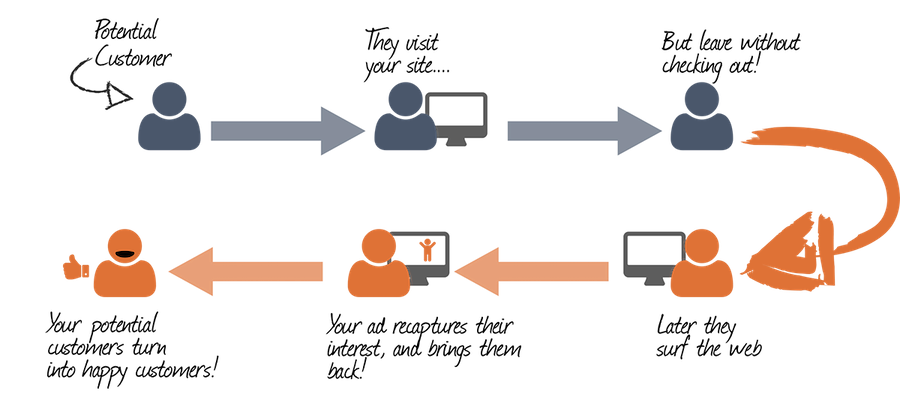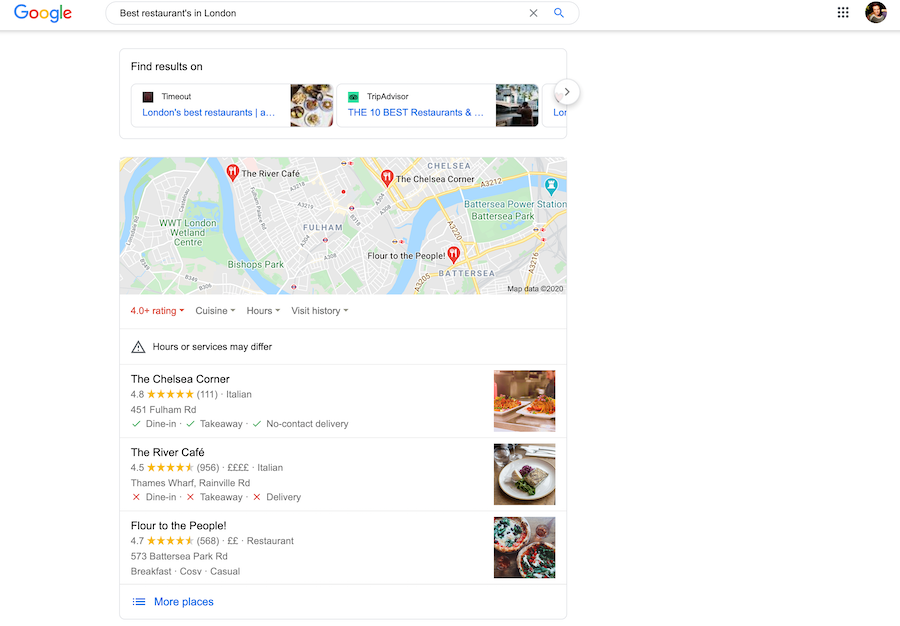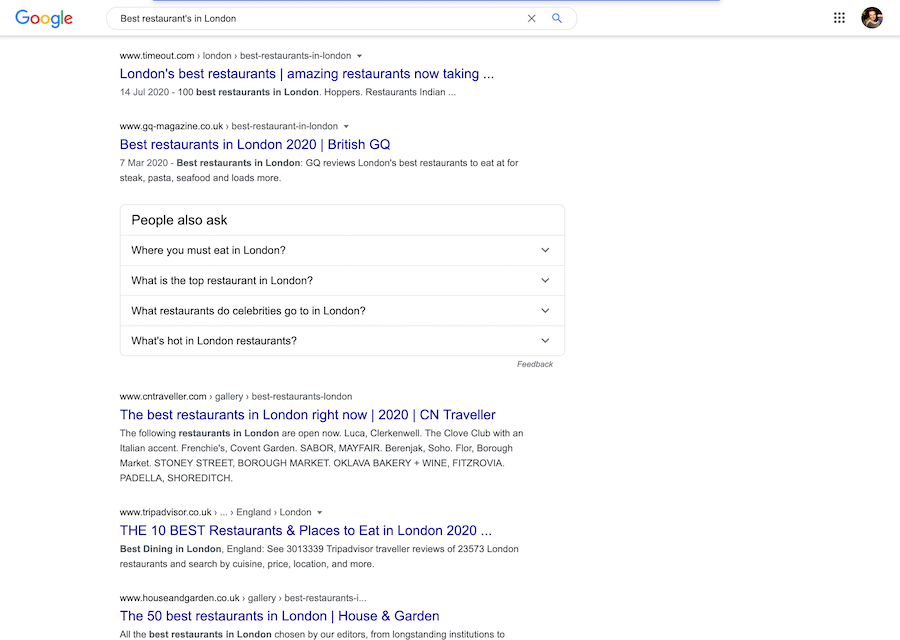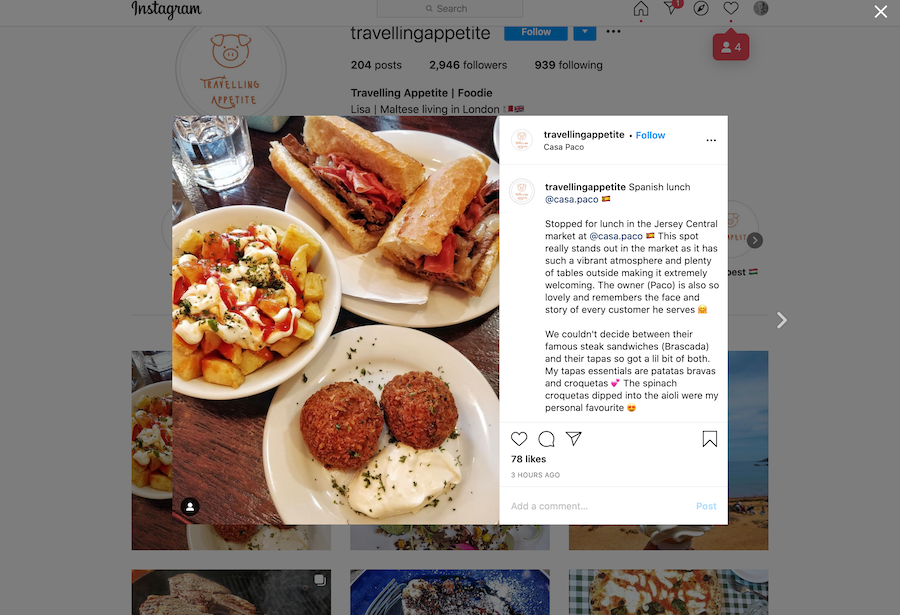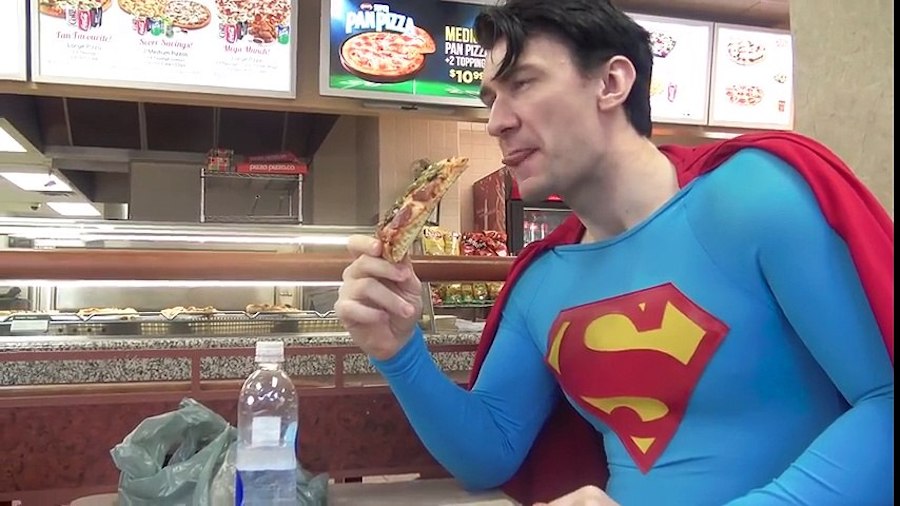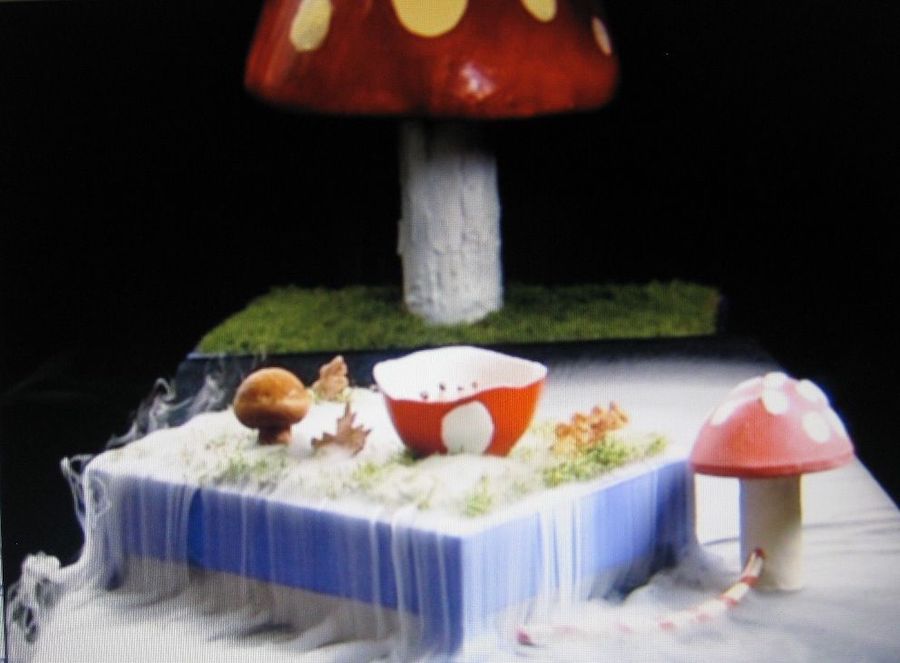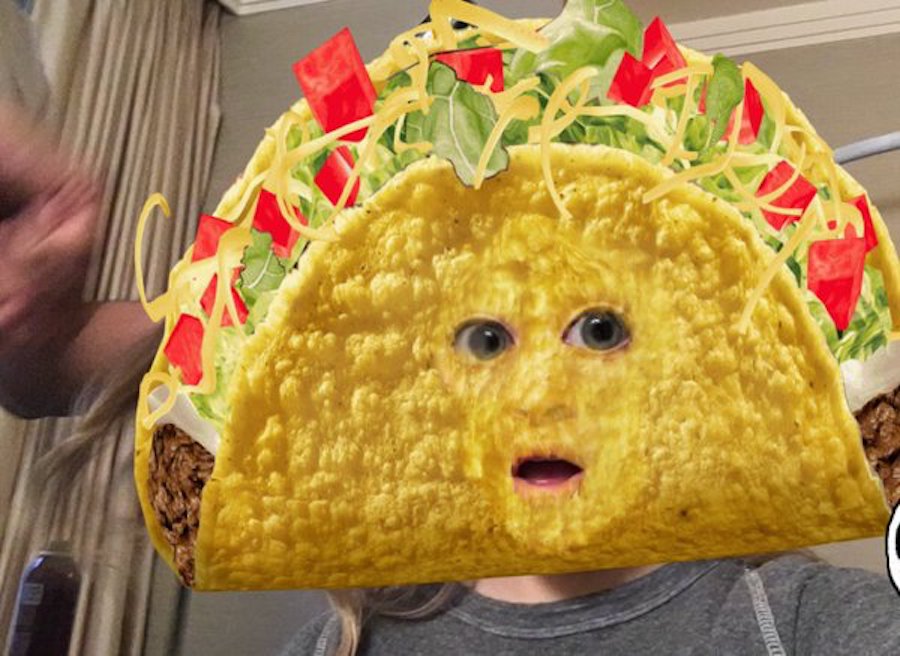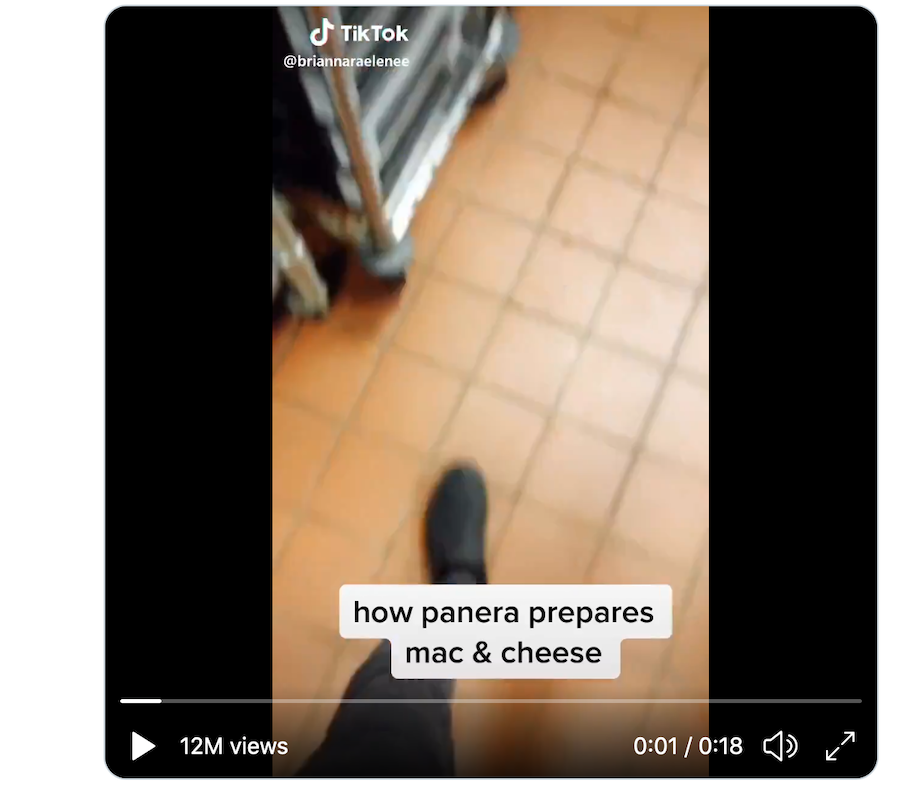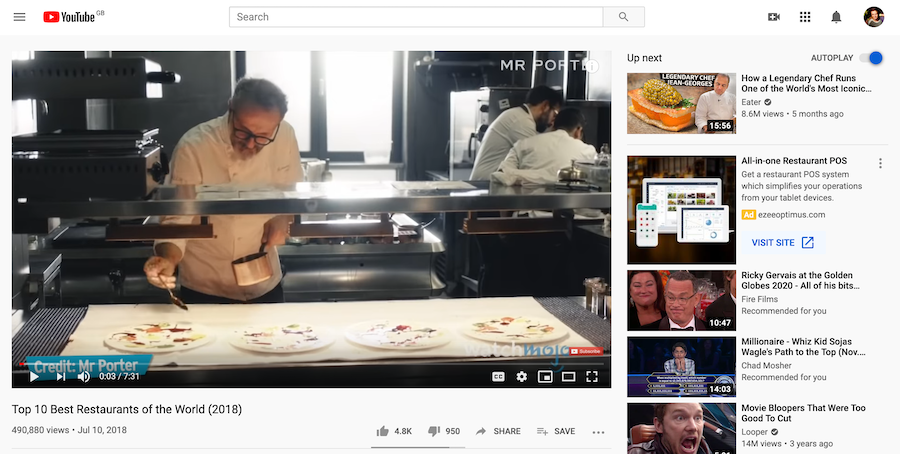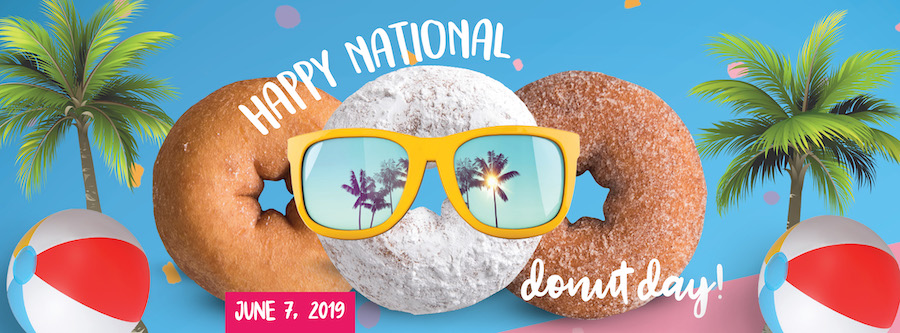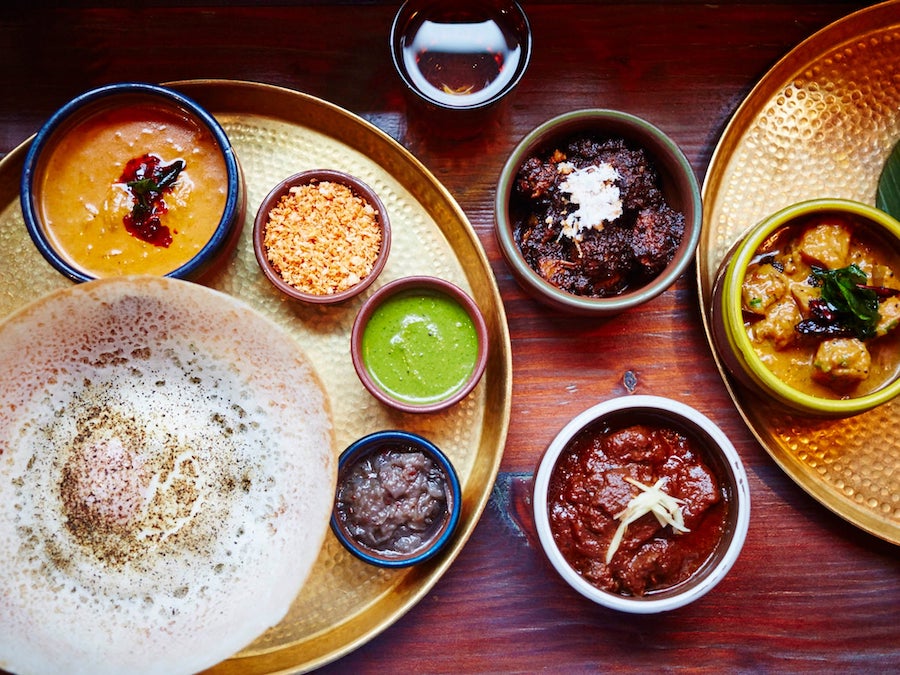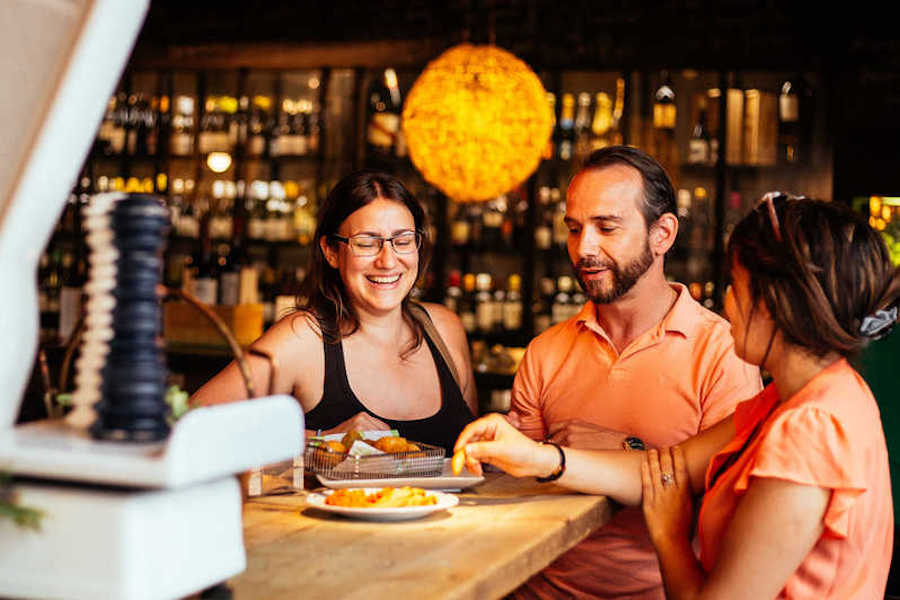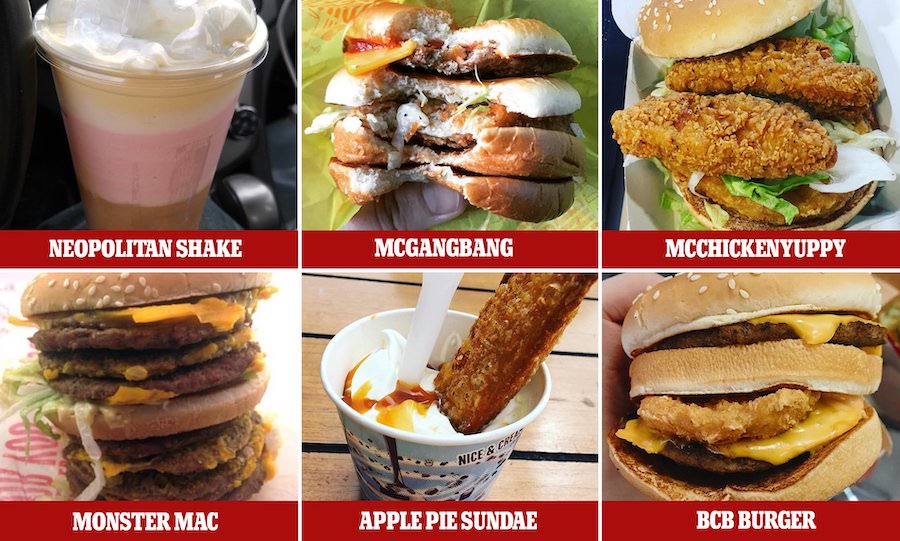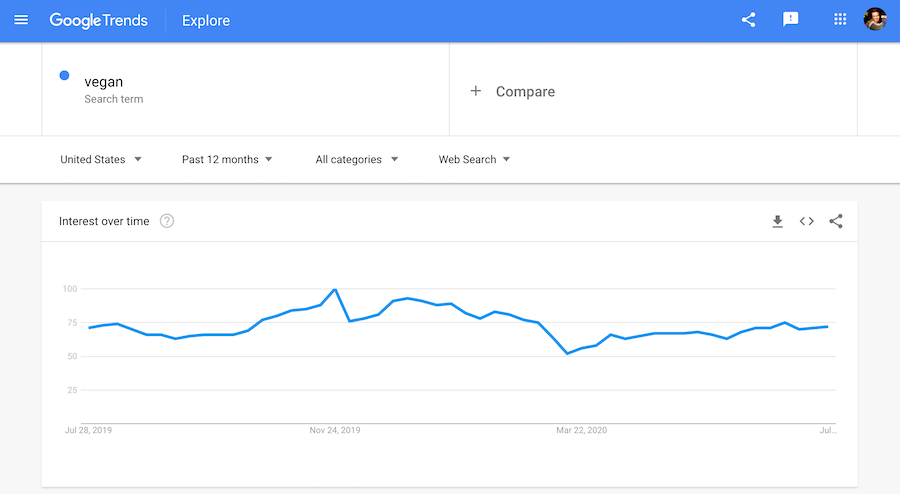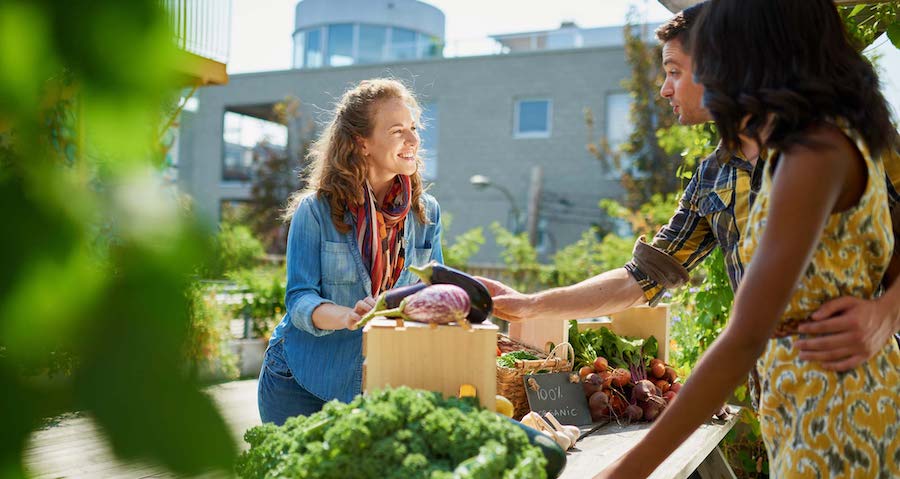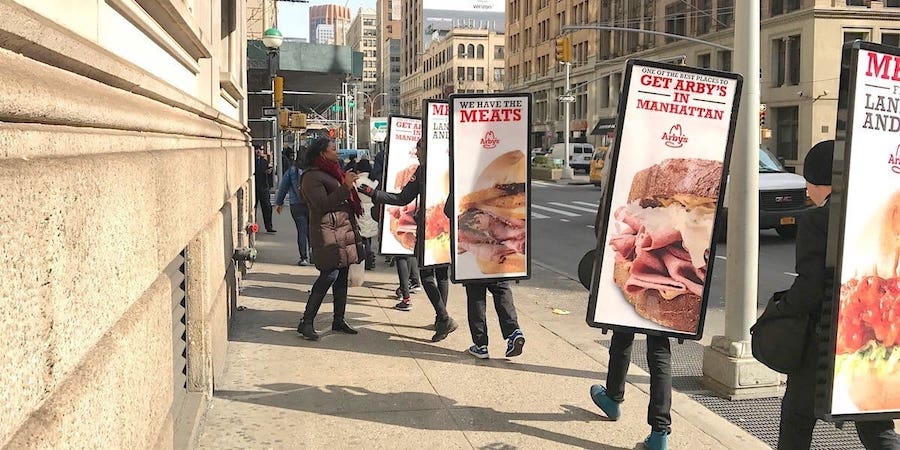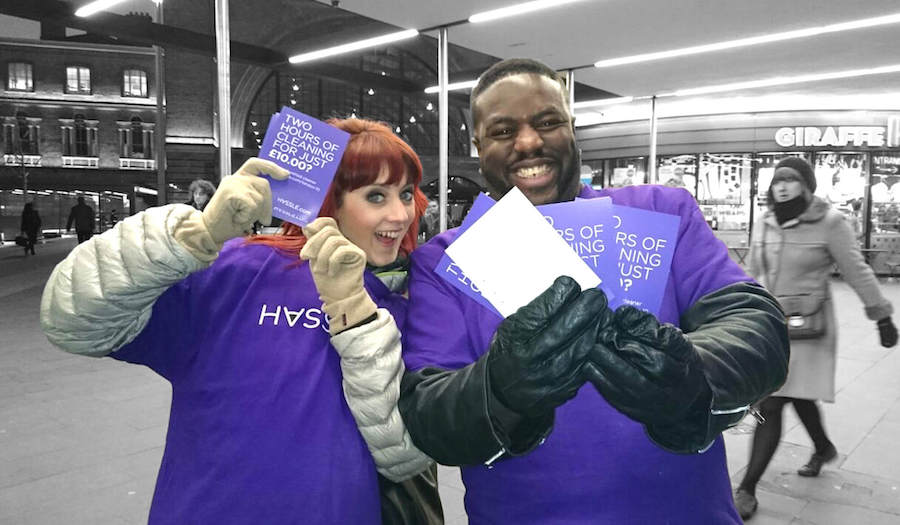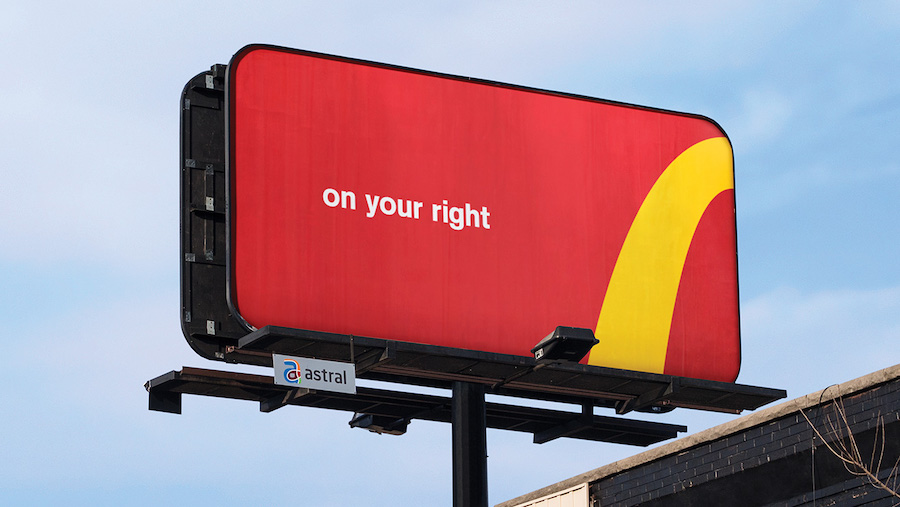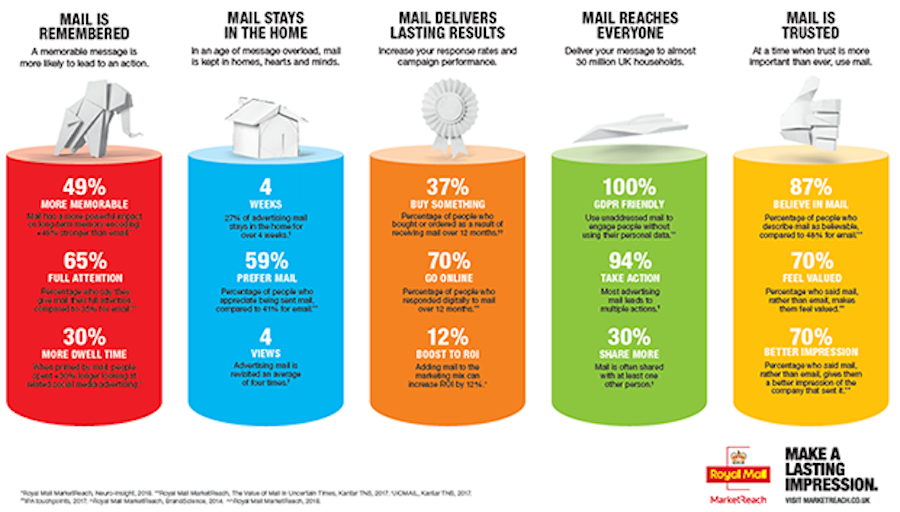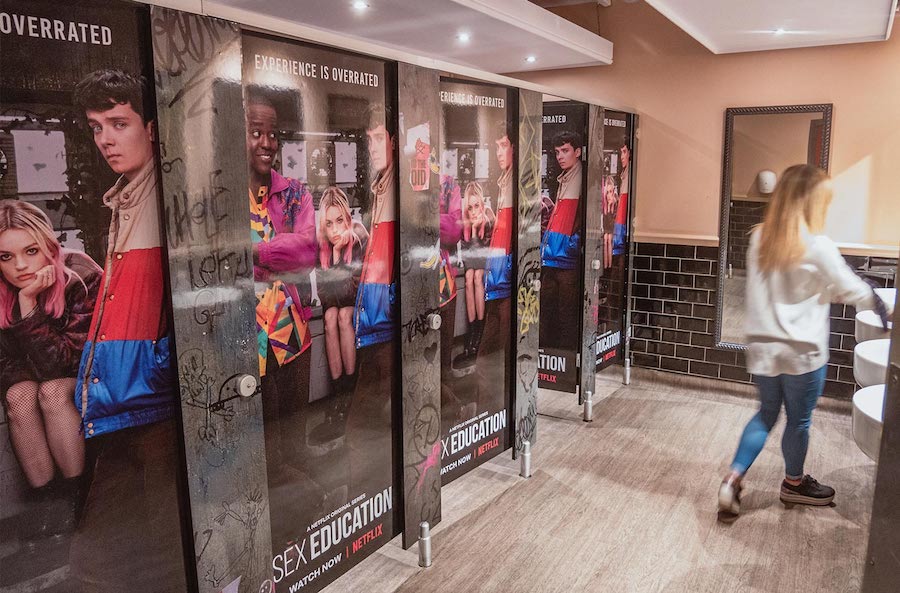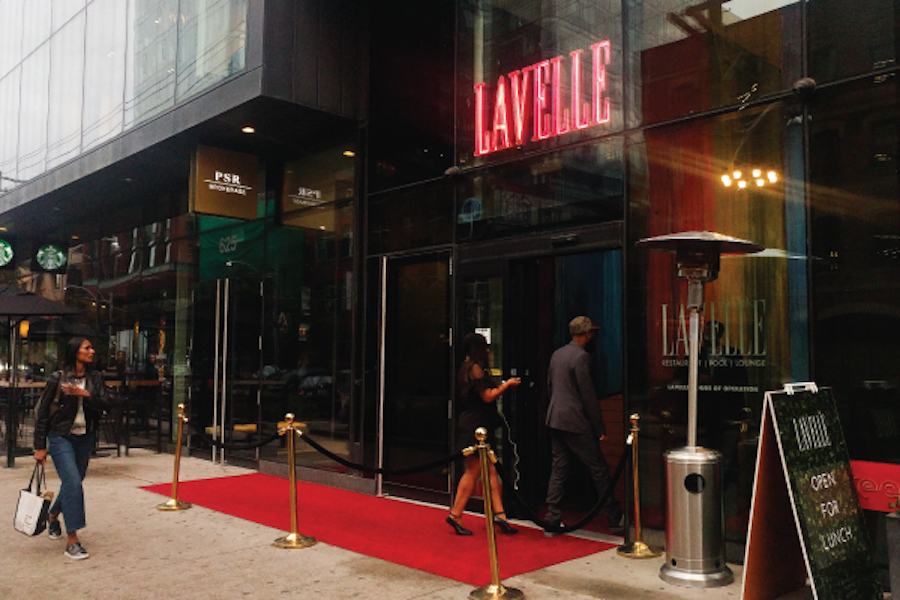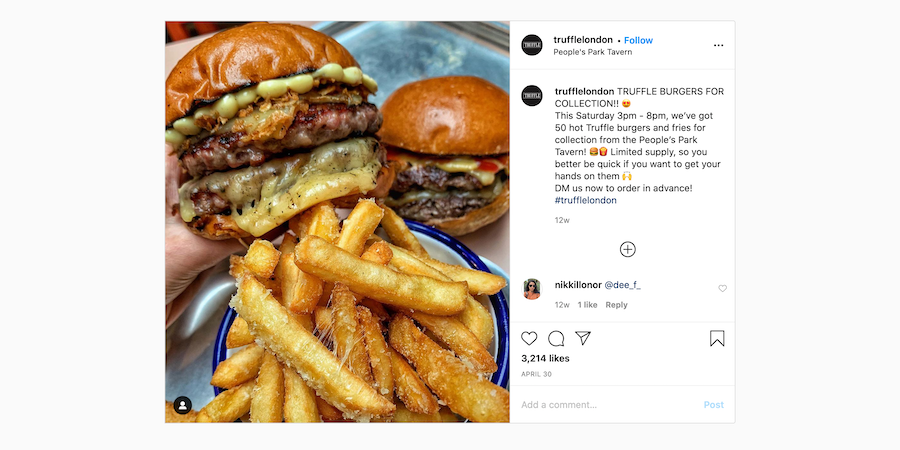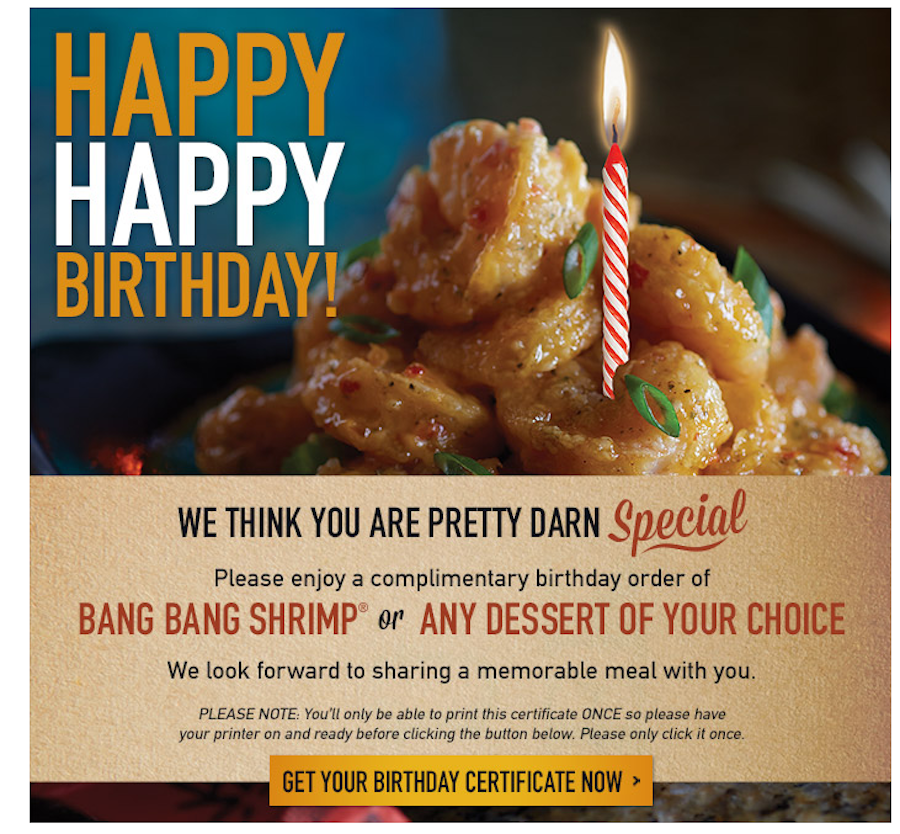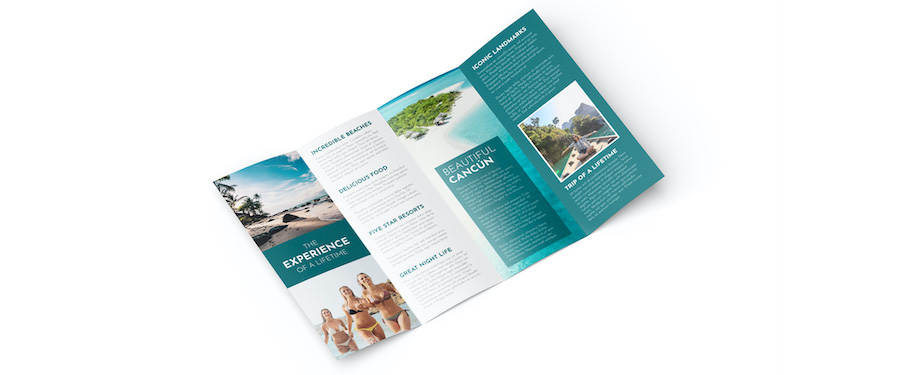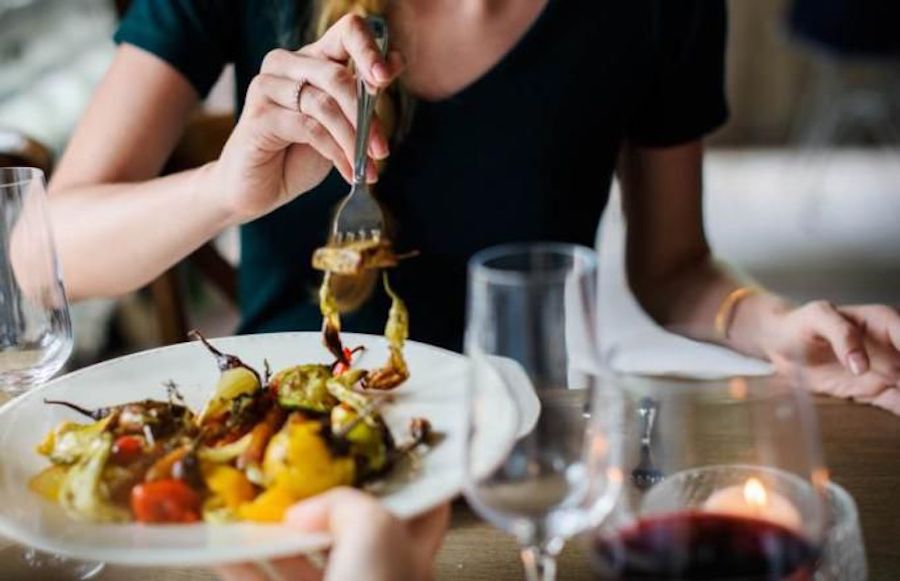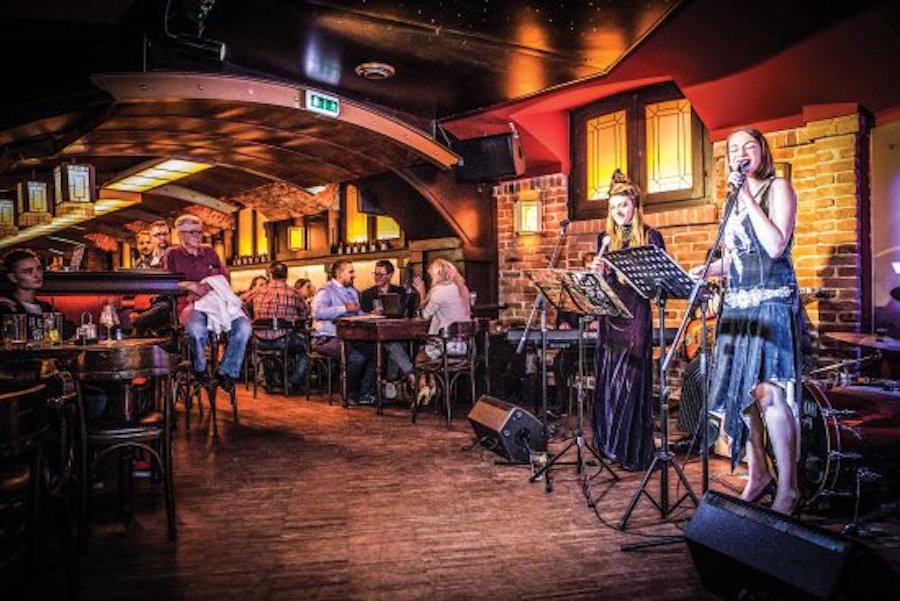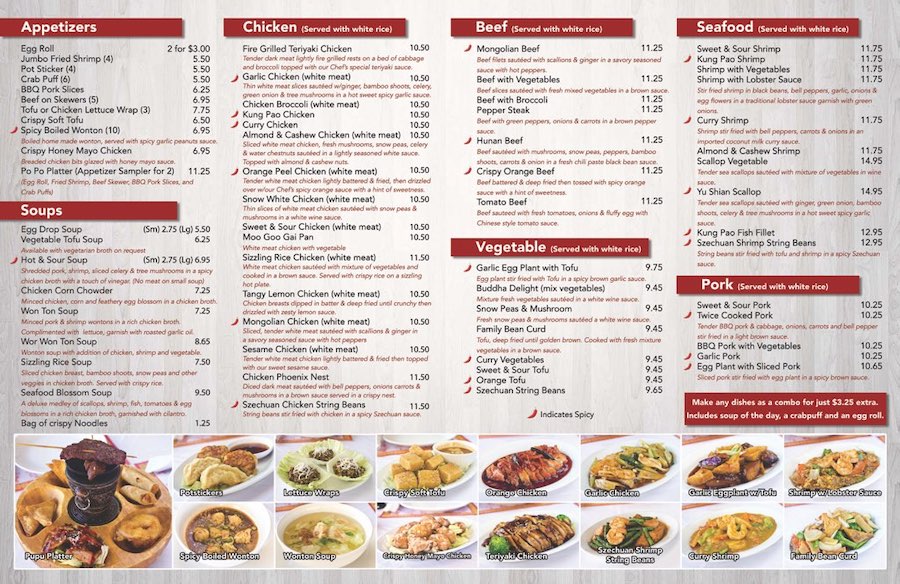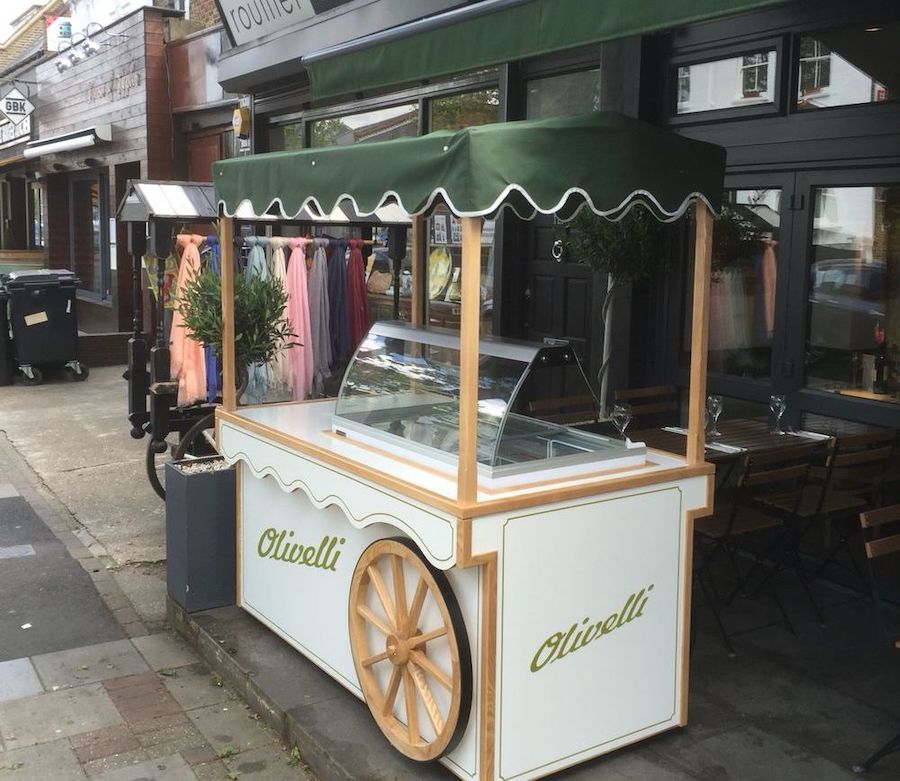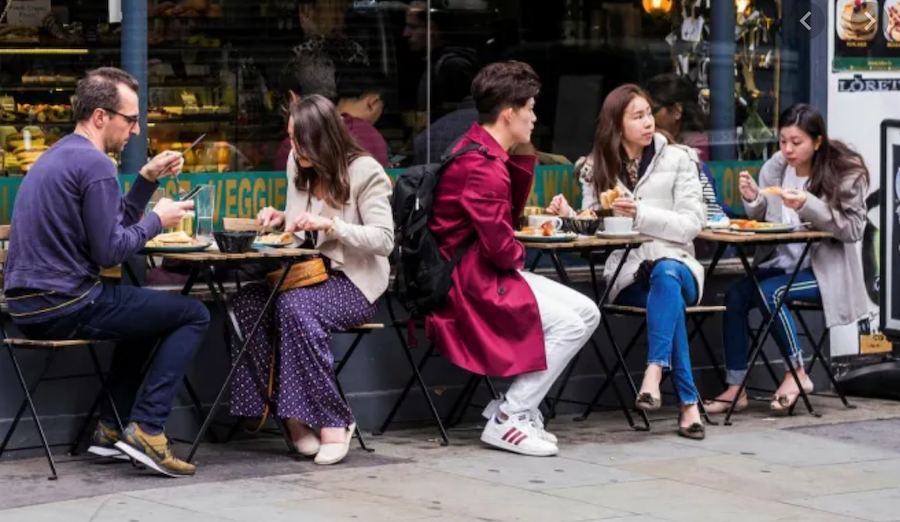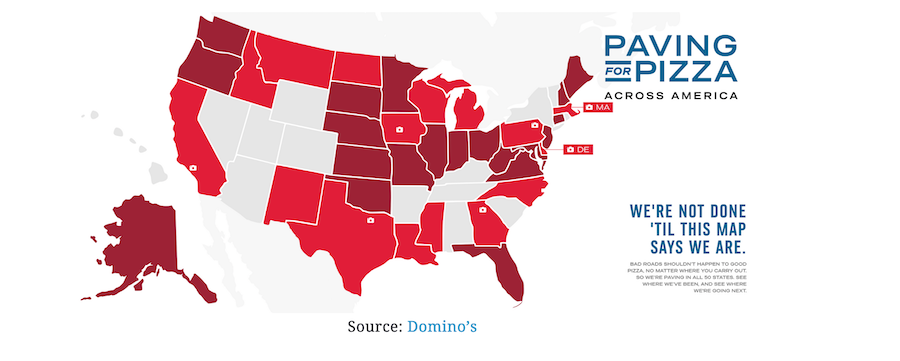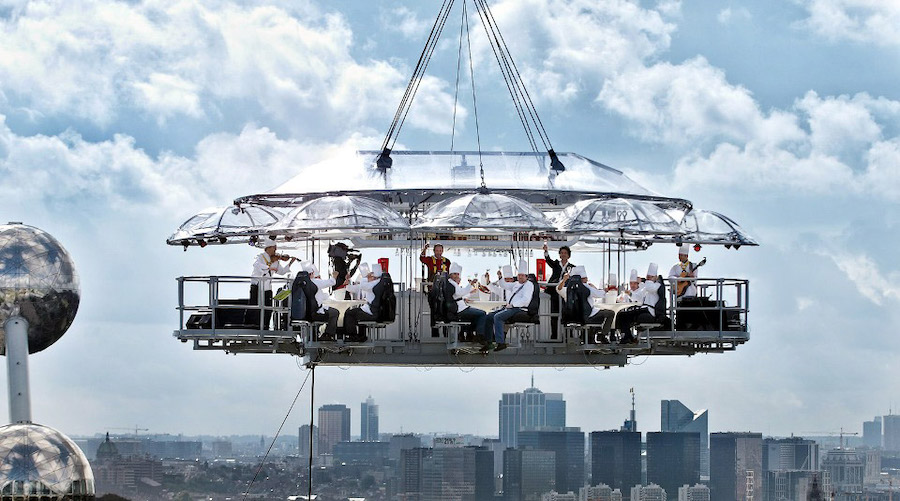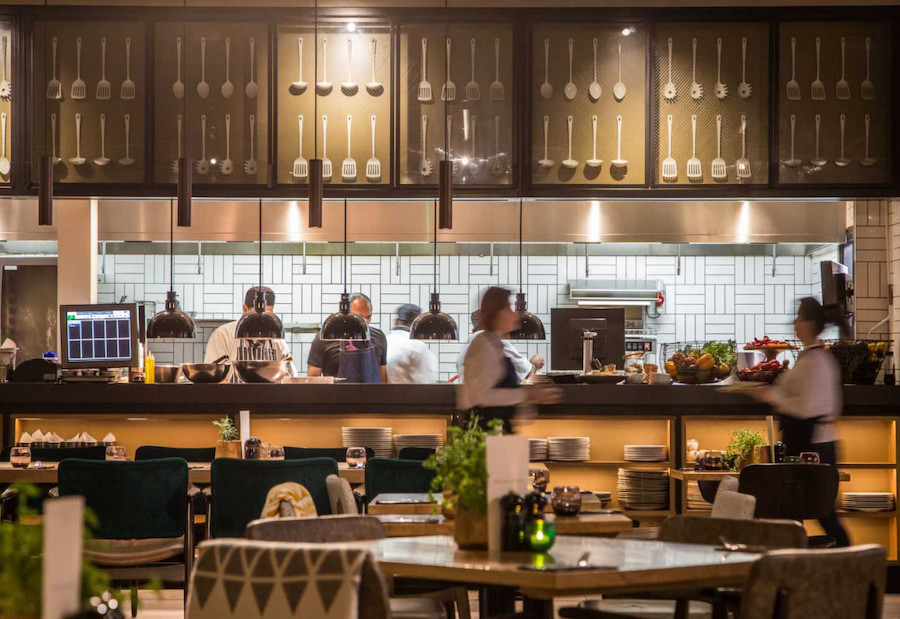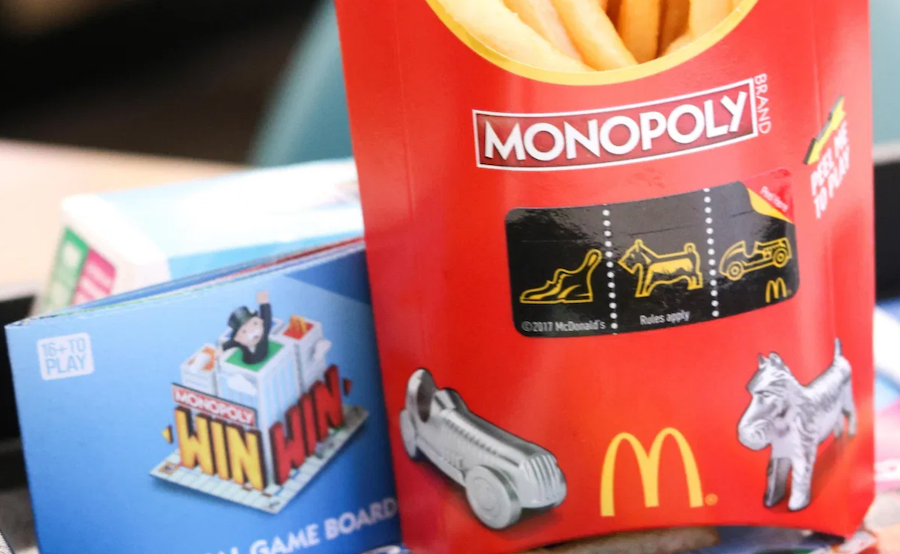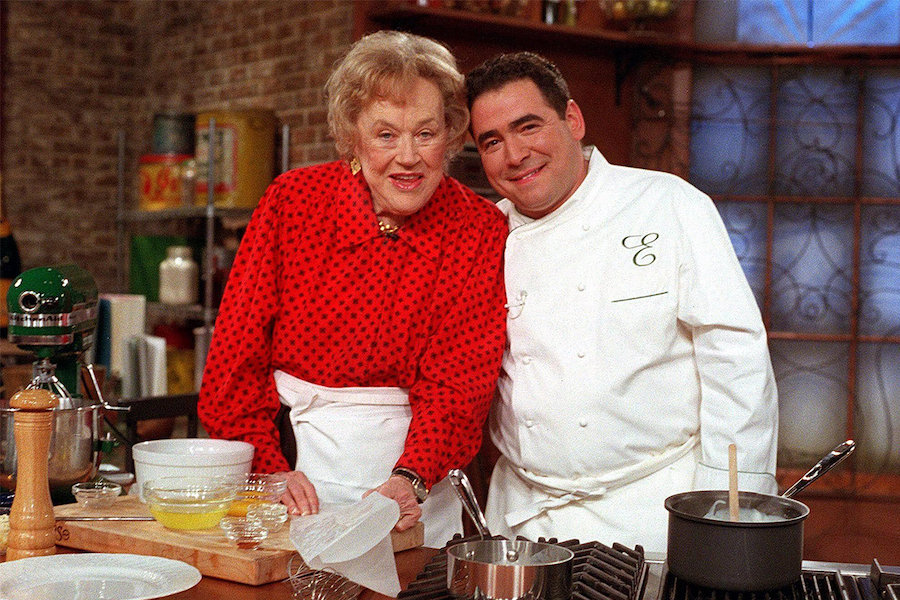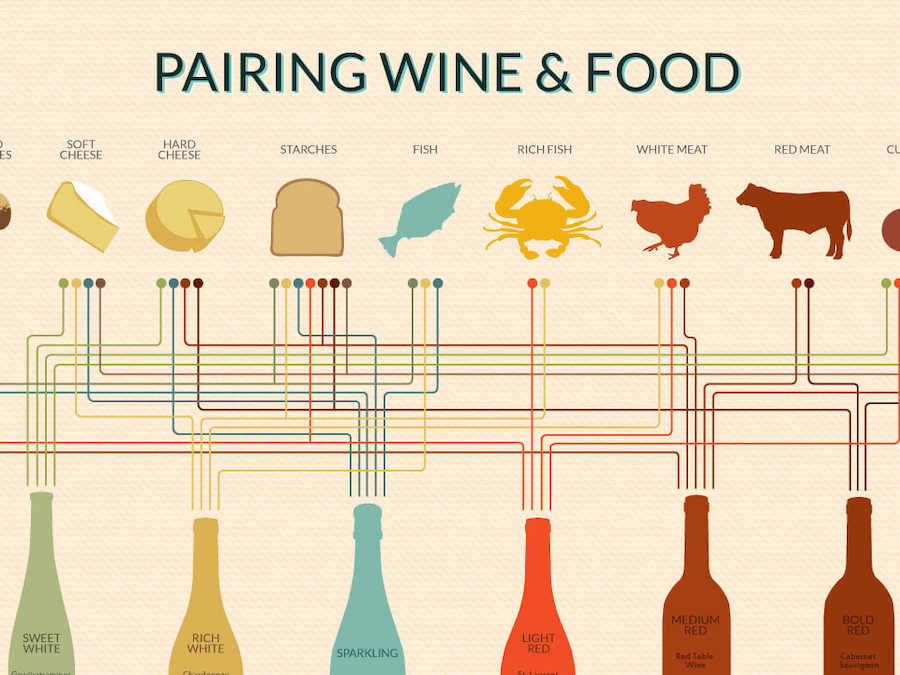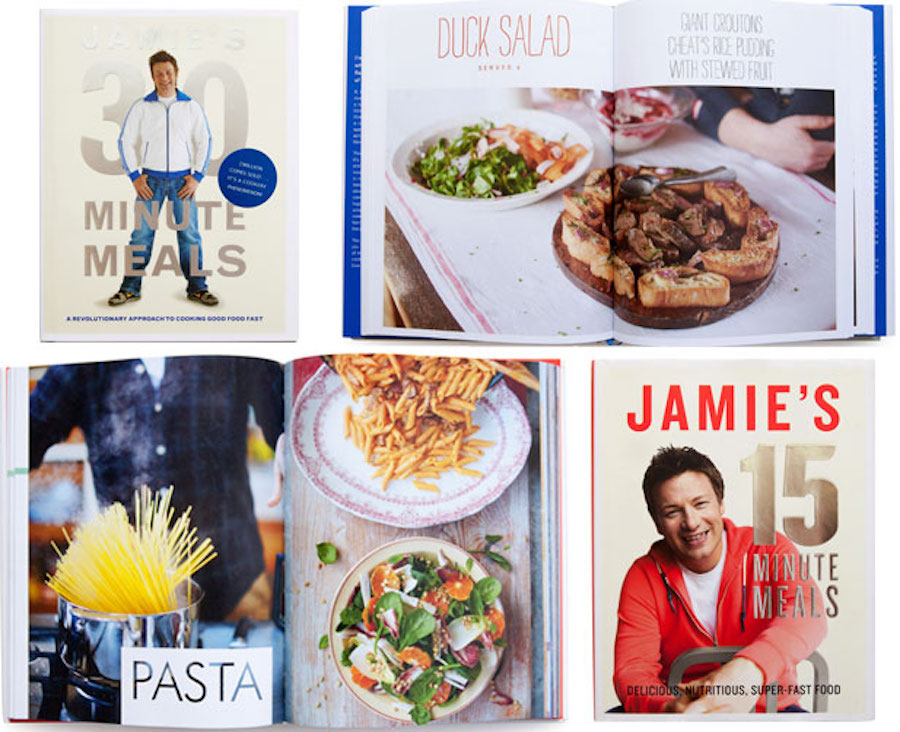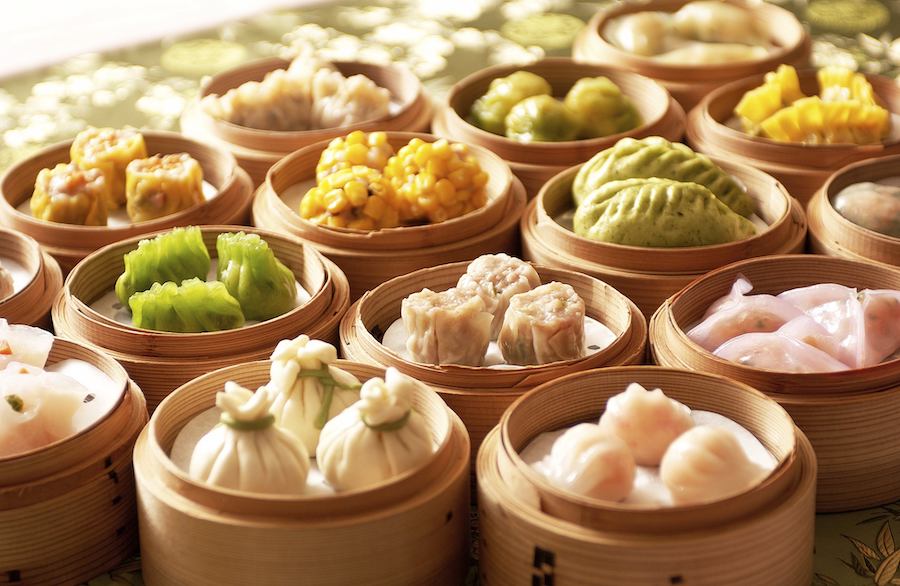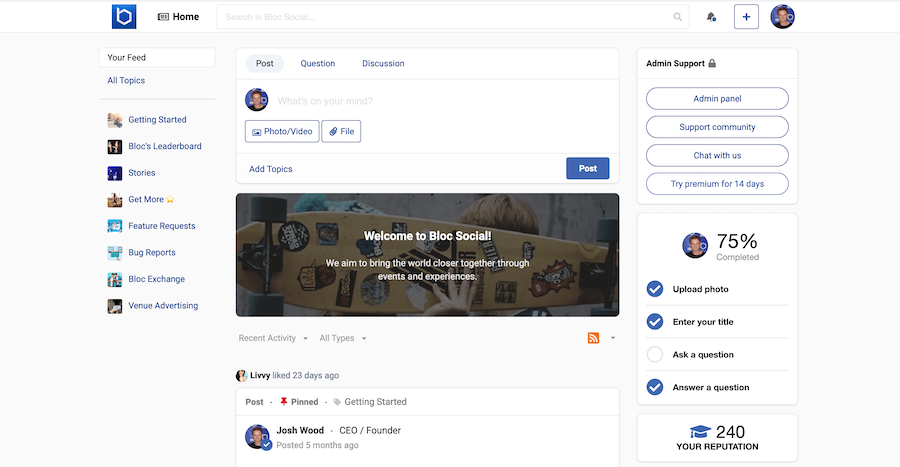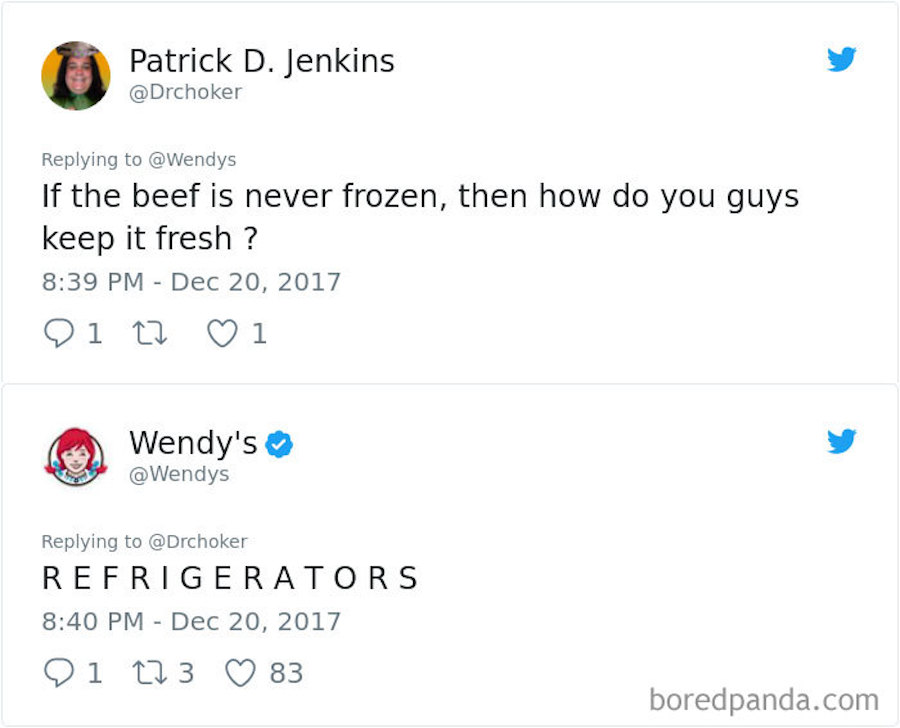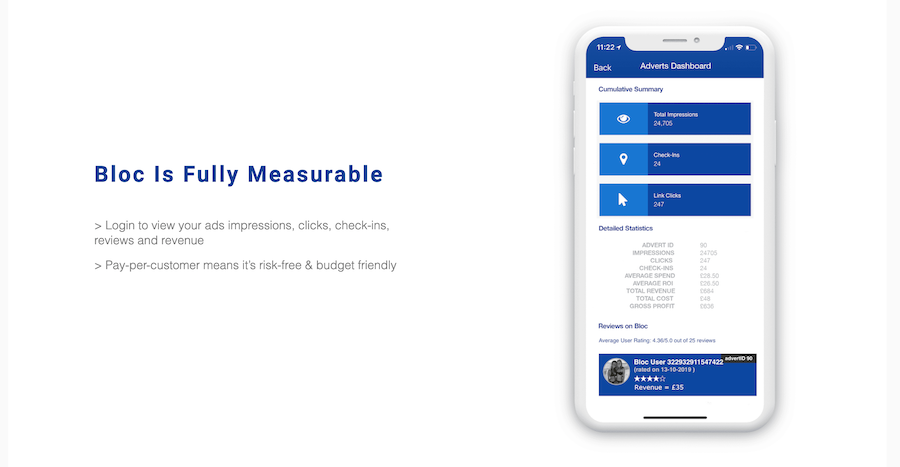101 Restaurant Marketing Ideas: How to Market a Restaurant
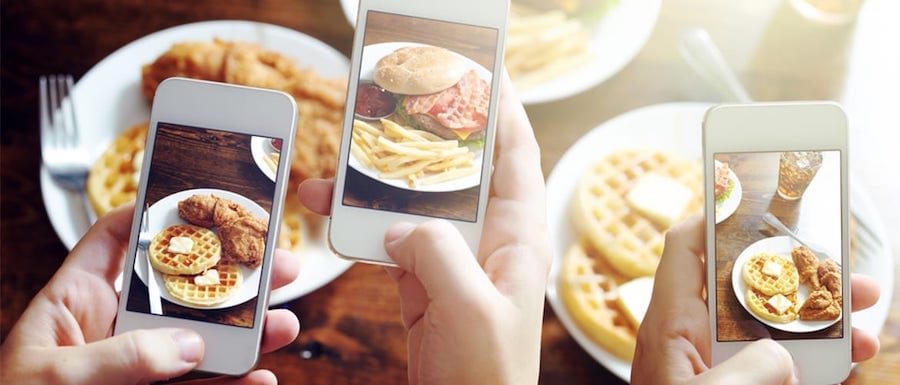
Restaurant marketing is getting more and more complex. It’s a crowded marketplace as restaurants continue to be one of our favourite ways to socialise.
You need creative and up to date restaurant marketing ideas to drive customers to your restaurant and keep them coming back for more!
While traditional marketing in your local area is still important, the advent of the digital world and research-savvy customers means that you need to mix the physical and online marketing to create the most successful marketing for your restaurant.
This way you can reach your target audience across more than one platform, which will increase the likelihood of getting the results you want from your marketing.
Here are our best restaurant marketing ideas that will bring you the results you desire.
You can use the quick links below to find content that you want to read:
1. Kickstart word-of-mouth
2. Offer amazing customer service
3. Develop your restaurant’s brand identity
4. Find your exact target audience
5. Build an easy to use website that’s mobile friendly
6. Have an easy to navigate online menu
7. Encourage check-ins on Bloc
8. Advertise on Bloc
9. Make sure you can be found on every online listing
10. Make sure your restaurant’s online details are accurate
11. Stay on top of review sites
12. Utilise social media
13. Follow other restaurants on social media
14. Build relationships by responding to comments on social media
15. Be Insta-credible
16. Use Instagram stories and highlights
17. Throw competitions on social media
18. Take advantage of hashtags on social media
19. Show off your staff
20. Automate the Twitter-sphere
21. Pin your food photos on Pinterest
22. Pay for geo-targeted ads
23. Understand restaurant re-targeting geo ads
24. Become a Google AdWords expert
25. Dabble in influencer marketing
26. Promote user-generated content
27. Start a Blog
28. Aim for Google’s Local Pack
29. Get handy at SEO
30. Find restaurant food bloggers
31. Implement a loyalty program
32. Formulate a food influencer loyalty programme
33. Take advantage of email marketing
34. Use SMS marketing
35. Host events
36. Form partnerships
37. Consider online food ordering mediums
38. Offer freebies, coupons and discounts
39. Experiment with pop-ups
40. Get fresh off the press
41. Go mobile with a food truck
42. Set up Google alerts
43. Implement online reservations tools
44. Create a gift card for your restaurant
45. Become a super restaurant
46. Craft unique restaurant experiences
47. Make sure your content is to a very high standard
48. Work out Snapchat
49. Try Tik Tok
50. Use videos in your restaurant’s digital campaigns
51. Sponsor local organisations
52. Put themed occasions in your calendar
53. Take advantage of 3rd party marketing
54. Try creating a brunch experience
55. Throw tastings and booze masterclasses
56. Start networking
57. Create mystery around a secret menu
58. Recognise popular trends
59. Source locally
60. Formulate a street team
61. Hand out flyers
62. Put posters up
63. Get on billboards
64. Try direct mail advertising
65. Explore other places you can do display advertising
66. Create a better email signature
67. Invite key people for free food and drinksg
68. Create DIY kits for some of your menu items
69. Wish people Happy Birthday
70. Create good signage
71. Advertise based on the weather
72. Have a tourism plan
73. Tease people with your menu
74. Impress food critics
75. Come up with a PR stunt
76. Offer set menus
77. Host live music
78. Encourage returning customers
79. Restrict your menu
80. Remove the currency from your menus
81. Serve ice cream
82. Try and create an outside space
83. Make sure you have vegan options
84. Make sure you have gluten free options
85. Extend your restaurant to food halls
86. Try guerilla marketing
87. Introduce photo ops
88. Showcase your chefs with an open kitchen
89. Work on the restaurant’s atmosphere
90. Create a lead magnet on your website
91. Use gamification to your advantage
92. Sponsor local events
93. Send your chefs on cooking shows
94. Create a supper club
95. Understand pairings
96. Write a recipe book and become chef famous
97. Get your restaurant included in a tour
98. Create a product line for supermarkets
99. Create a community platform
100. Pair your voice with different platforms
101. Understand behaviours and analyse, analyse, analyse
1. Kick-start word of mouth
Word of mouth is still one of the most powerful restaurant marketing mediums there is. When done right, peer to peer referrals can snowball, leading to free customers.
Kimberly Whitler (Forbes) discussed in a recent interview, that one of the most important factors for successful WOMM is to give your customers a reason to talk.
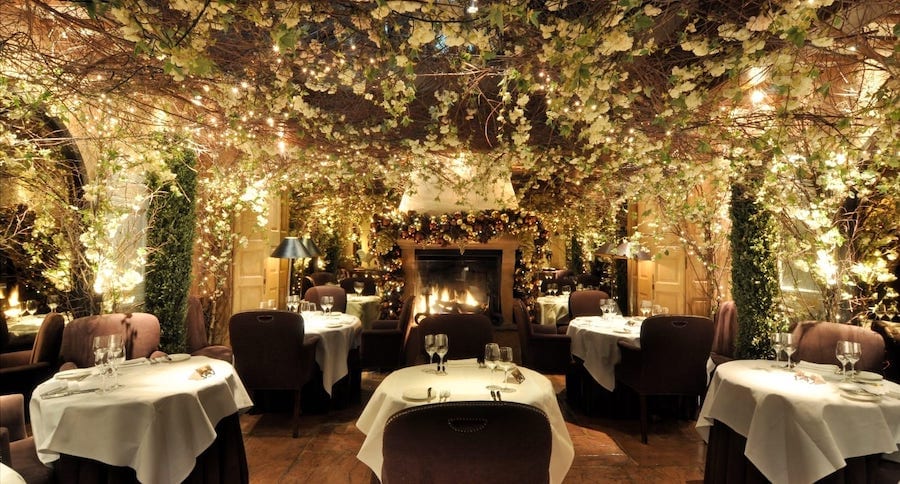
If your restaurant’s food is average or the service is poor then it doesn’t matter how much you spend, your marketing results will suffer. The better your restaurant is, the more likely word of mouth and your restaurant marketing will work.
Spend on your restaurant first and perfect your service. It’s sustainable financially, and you will get amazing results in the long run, consistently.
2. Offer amazing customer service
Great customer service is essential for your restaurant marketing efforts, especially for word of mouth marketing. It is essential that your customer service be memorable and consistent.
It can be as simple as having hosts greet your customers with a smile and genuine conversation. Train your staff to be friendly, personable, and make sure they make recommendations based on customer preferences.
Jeff Mowatt’s experience from his time in Greece is a perfect example of how to greet customers as they walk in.
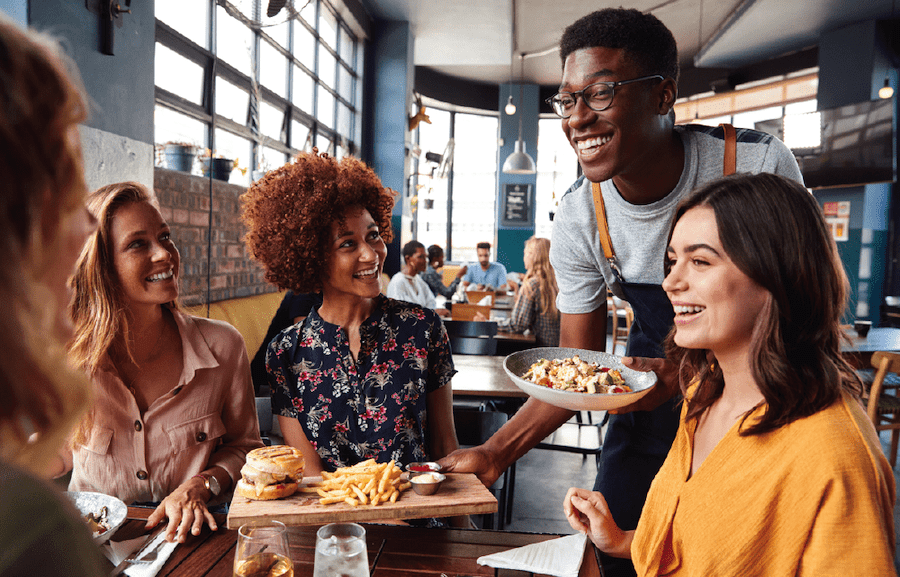
Create an ambiance that’s worthy of the queen and train managers to stop by every table and ask about the customer’s experience and what they can do to improve it.
Marketing is all about planting the seed for a future sale, and by delivering unforgettable customer service, you will stay top of mind of customers who will want to come back.
3. Develop your restaurant’s brand identity
Your restaurant is a brand and you need to have an identity and core values. By deciding upon your target audience, you can then build your brand with them in mind.
This makes restaurant marketing easier as you know who you’re targeting and the messages you want to send will be clearer and have more of an impact.
For example, if you own a vegetarian restaurant your target patrons are clearly going to be vegetarians. You can reflect their interests in all your marketing efforts.
To learn who your target audience is, for your brand identity, Sameer Panjwani (Mondovo) suggests to ‘pay attention to the customers that you see at your restaurant each day’.
‘Use social media by checking out the comments section to determine the type of people who enjoy your restaurant, or brand, the most.’
4. Find your exact target audience
Finding your exact target audience is an incredibly important step when creating your restaurant marketing plan.
You may have different types of customers who all enjoy your restaurant, but they should be seperated into groups.
Once you have these groups you can create specific marketing campaigns for them.
For example, your restaurant menu may have delicious vegan options as well as meat options. But you can create vegan focused ads for the vegan audience.
5. Build an easy to use website that’s mobile friendly
The world has gone digital.
‘Your website is a sales tool. If you factor the cost of maintenance and compare that to the salary or commission of a potential salesperson, then investing the right amount of money for a good website is a no brainer.’ Ian Mukrit (MVMG).
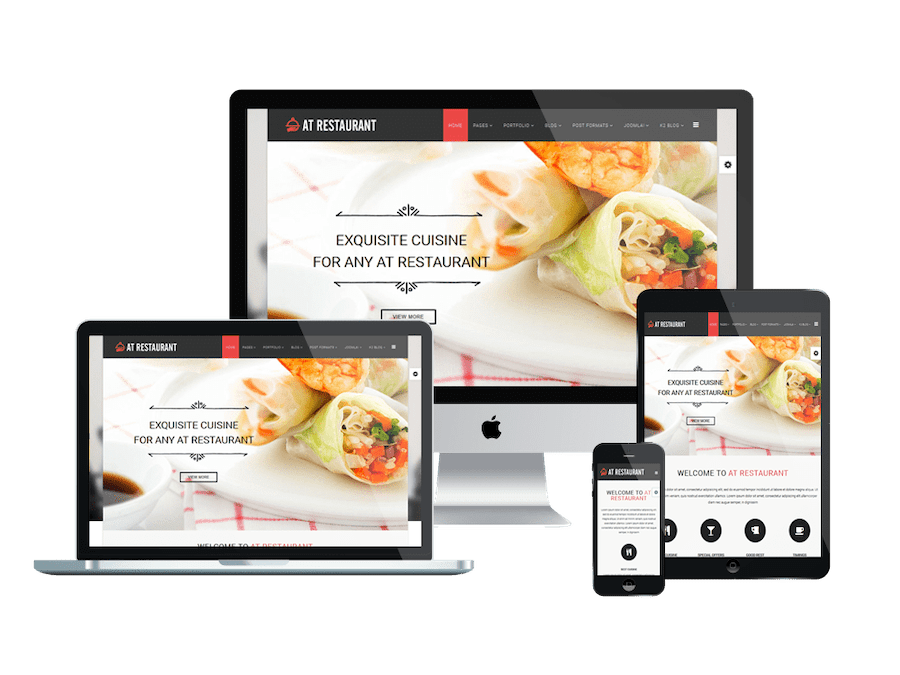
Customers, more than ever, are using mobile and the internet for finding and booking restaurants.
If someone wants to book a restaurant, the chances that they take the time to pull out their computer are very slim. They are likely already on the go and will use a mobile to quickly find a restaurant.
Here are our top tips for a successful website:
- Keep it simple
- Make sure it’s friendly on every single device, especially mobiles
- Implement a simple booking platform
- Use lead magnets to capture data
- Have a digital menu on your site
Having a beautiful and easy to navigate website allows you to begin the dining experience at your restaurant before the customer even walks in.
6. Have an easy to navigate online menu
You should have your menu published on your website as it’s probably the #1 piece of information potential customers are looking for when visiting your site.
A lot of people like to do research online before visiting or ordering from a restaurant. It should be easy to find (from the homepage), easy to read, up to date and simple to open. It’s best to have it displayed on the site rather than downloadable as a PDF.
If you don’t have a good menu online and available for customers, they’ll simply look elsewhere.
Check out Ian Ferguson’s article on ‘Online Restaurant Menu’s That Sell’ for some pro tips.
7. Encourage check-ins on Bloc
Bloc is a social events app that rewards their users financially for attending venues.
The way it works is that everytime a user checks in on the app and attends a venue (tracked via geo-location), that user receives their in-app currency, stars.
Once a user has collected enough stars, they can exchange them for real money.
Users can also find restaurants to attend on the app based on popular places and where their friends are going.
By encouraging your customers to check-in, your restaurant can appear popular on the app.
This means your restaurant will show up in more places on the app and a snowball effect can happen with more people checking in.
8. Advertise on Bloc
Every single restaurant in the world is on Bloc, but Bloc’s users may not check-in to a specific restaurant unless they know about it.
This is where Bloc’s advertising comes in.
You can advertise your restaurant on Bloc for as little as £2 per customer (inc. VAT).
The way this works is that you create an ad and this is pushed to every single Bloc user within 10 miles of the venue. You are not charged for impressions or clicks so you can reach tens of thousands of people who are highly targeted.
You are only charged if the user checks in and actually attends the venue. So it’s pay-per-result advertising as the geo-location technology tracks whether the person went or not.
It’s risk free and budget friendly.
There is also a free trial for new advertisers, so you can get £150 free ad credit, which is 75 customers for free.
9. Make sure you can be found on every online listing
There’s no point investing in a brilliant website if no one can find it. As part of your restaurant marketing plan you need to list the website on as many websites and apps that you can.
Most are free, think Google Local, Bloc Nearby and Tripadvisor.
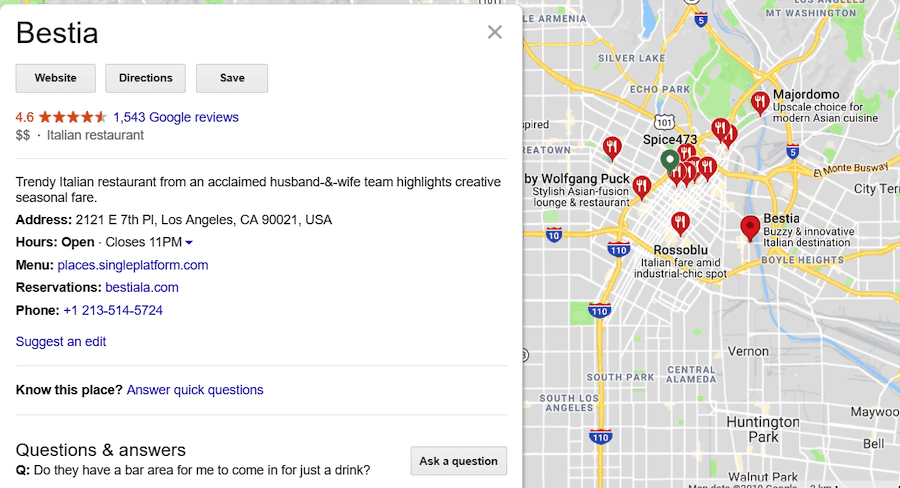
You can also find lots of apps by visiting the ‘App Stores’ and searching by category for food and drink. You’ll find all the top apps there that can list restaurants like yours.
Bloc for example, is an app that goes one step further than just listing your restaurant.
Instead, it incentivises people to attend by rewarding them with real money, so your customers can earn real money by attending your restaurant.
It’s free to try with £150 ad credit which is 75 customers for free. After that it’s only £2 (inc. VAT) for every customer that attends (using geo-location).
10. Make sure your restaurant’s online details are accurate
Did you know that the restaurant industry is the most searched consumer industry on mobile and browser?
Ryan Pinkham, a demand expert at SmartBear, analysed a recent study that found that ‘81% of consumers have searched for a restaurant on a mobile device’.
It’s incredibly important to make sure your restaurant’s online details are accurate, up-to-date and that all the links work.
11. Stay on top of review sites
Did you know that customers read restaurant reviews more than any other industry?
Monitoring review sites is incredibly important for discovering what your target audience is saying about your restaurant.
If you’re getting good reviews it means customers are far more likely to recommend your restaurant. Positive reviews are essential for restaurant marketing success.
If you’re getting bad reviews, then take it as constructive criticism and listen to them to continuously improve your service.
You should be constantly tweaking and improving your restaurant so your customers can only leave positive reviews.
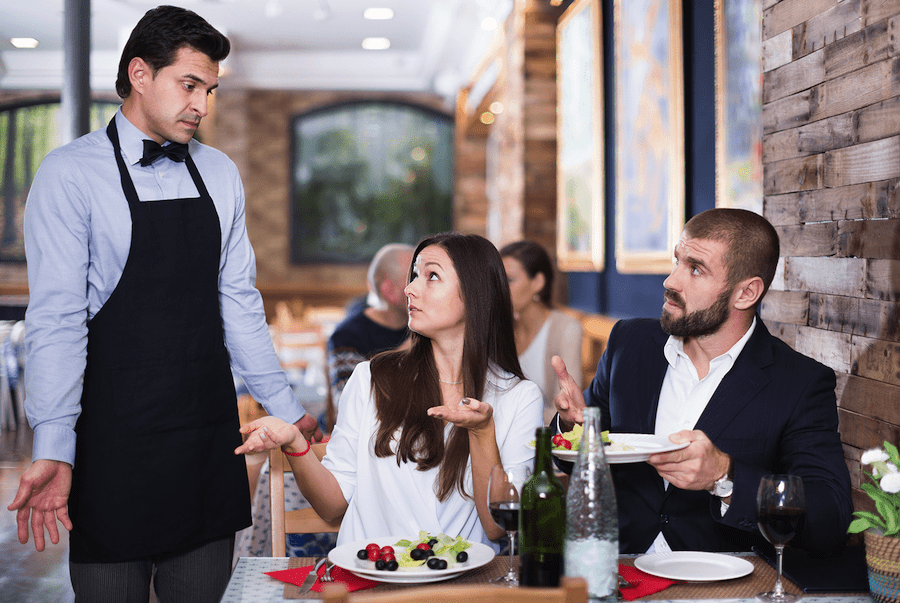
There are many websites where people can leave reviews but the main ones are Bloc Nearby, Tripadvisor and Yelp.
Note that on platforms such as these, customers can leave a review even if you haven’t submitted your restaurant’s details yourself.
Invest your time into analysing all the reviews across the internet. Most of these platforms allow you, as the verified owner, to reply to reviews.
Acknowledging and thanking reviews is good practice, even if they’re negative. Always reply in a polite and professional manner and avoid getting in disagreements, even if you strongly disagree with the review.
This can be damaging to your brand.
Rexly Penaflorida 11’s ‘7 steps to handling negative reviews’ are clear and work for turning unhappy customers into happy ones:
- Contact the reviewer.
- Comment first with “Thank You.”
- Apologise and be sympathetic.
- Take responsibility for the experience.
- Correct the situation.
- Take the matter offline.
- Try for a second chance.
In ‘a new Harvard Business School study by Michael Luca, which set out to ascertain whether “online consumer reviews affect restaurant demand,” determined that a restaurant can increase its Yelp score by 1 star and can see revenues increase from five to nine percent.’ Bianca Bosker (Huff Post)
12. Utilise social media
Social media has become one the most powerful tools available for successful restaurant marketing. Social media helps with increasing sales, building a brand and retaining loyal customers.
To get started you need to create a Facebook business page, a Twitter account, an Instagram account and Pinterest account.
With this setup, you’ll be able to showcase your restaurant’s food with high quality photos, show happy customers and give customers a sneak peak of behind the scenes and show off your staff. In addition, if you have a good social media video maker tool, you can use it to create videos of your restaurant’s menu and overview, which you can then post on any social media platform where you can reach your target audience.
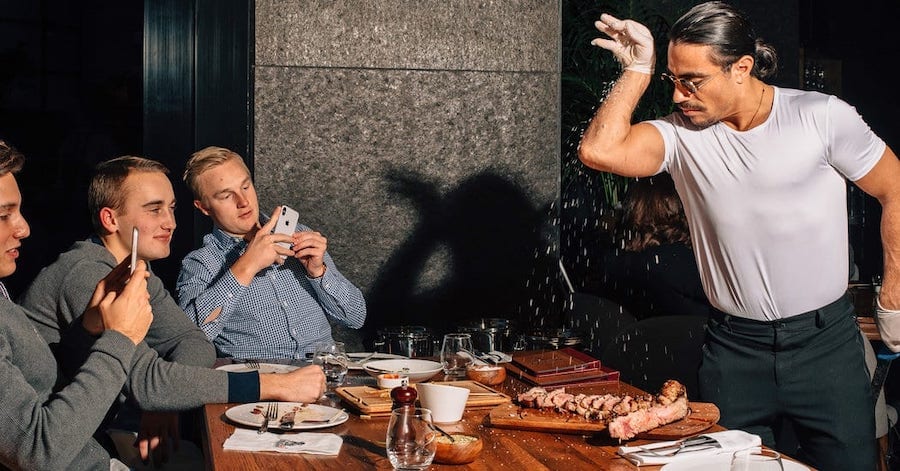
You’ll also be able to share special discounts, exclusive deals and promote your news.
Most importantly you’ll be able to connect with your customers by commenting and direct messaging to build rapport for repeat customers.
It’s vital that you keep on top of your social media accounts as non-active accounts are a lot worse than not having an account at all.
It’s not too time-consuming and photos can be shared across multiple platforms with one click.
‘Restaurants that respond to customers on social media have an advantage, since 71 percent of customers say they’re more likely to recommend a company that responds quickly to them on social media.’ Migs Bassigs, (ReviewTrackers)
The biggest trick for utilising social media for free isn’t actually on your handles, but actually making sure your customers and snapping away and sharing their experience.
A restaurant marketing hack is to make sure your food is ‘Instagrammable’ and you can reach thousands of potential customers for free.
Each customer can be become a free social influencer, you just need to make it easy for them to be one.
13. Follow other restaurants on social media
Benchmarking is an important business term, which is the process of seeing what other companies around you are doing and improving upon it.
By following other restaurants on social media you can get an insight into what some of the best restaurants in the world are doing. You can then develop these ideas and create them for your restaurant.
For example, if you see a restaurant has completed a successful Instagram competition, you can throw a similar competition for your restaurant.
14. Build relationships by responding to comments on social media
One of the easiest ways to interact with your customers is by responding to comments on social media.
Interacting with your customers humanises your restaurant’s brand, which will help for getting repeat customers.
Don’t just respond with emojis when someone comments on your posts. Instead, respond with questions and keep the conversation going for as long as possible.
Other people will then feel like they can join the conversation and your reach will improve.
Social platforms like Instagram absolutely love conversations on their posts. In other words, their algorithm places a lot of weight on engagement in terms of comments.
So the more comments your posts have, the more Instagram will reward you with better reach.
15. Be Insta-Credible
If you use Instagram, you’ll know that you can’t scroll more than 3 seconds to find another picture of food or drink on your newsfeeds.
Food porn is alive and well.
Instagram is one of the best ways to promote your restaurant on social media, as visual content is in high demand.
Having high-quality and drool-inducing photos is a sure-fire way for drawing in hungry customers and is essential for successful restaurant marketing.
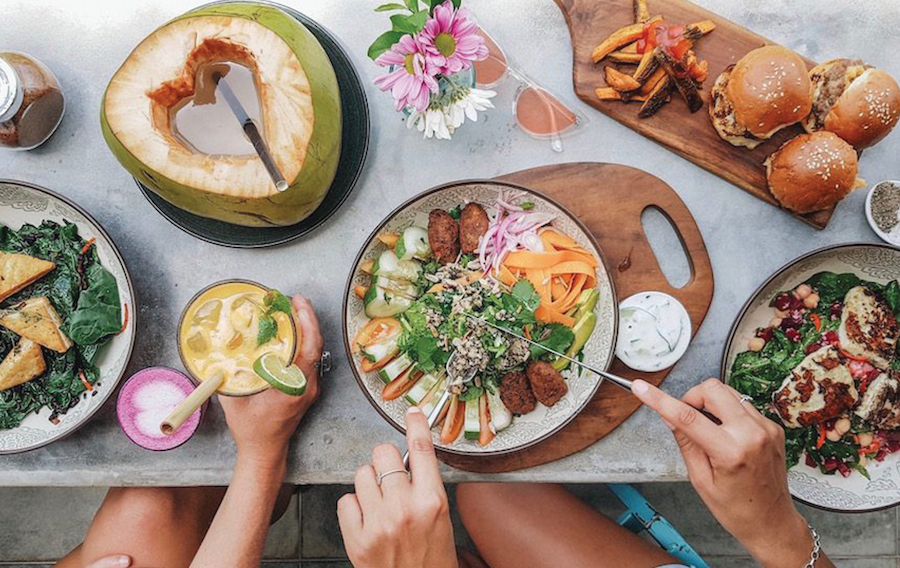
Barbara Lee, a renowned restaurant industry writer, has 6 tips to make your restaurant more Instagrammable;
1. Have beautiful food plating – i.e. the composition of the elements on the plate (think blueberries added to a plate with a single croissant)
2. Involve interesting plate wear – make it fun, unique and in line with your brand identity (for example, funky vintage ceramic plates)
3. Kitschy and cool décor – having something that is quirky and fun means more Instagram pictures (think swing chairs and neon signs)
4. One super unique and novel menu item – coming up with something novel (and something outrageous) might get you in the press and get people taking photos (a burger for £100 for example)
5. Have good lighting – no one ever took a great photo without good lighting.
6. Live plants (especially succulents) – even a simple plant wall could add a touch of green, Instagram gold.
You should also use Instagram to relay your brand messages to your target audience and is a stage to play around with your brand identity.
For example, a restaurant marketing themselves with a focus on health might share photos of people exercising, hiking or practising yoga. Basically, content that you think your fan base will enjoy.
You should also bear in mind that many people, millennials especially, attend restaurants just so they can photograph the food and show off that they have attended.
You should come up with something unique, creative and ‘Instagrammable’ that people won’t be able to resist taking a photo of.
Pro Tip: If your restaurant has been tagged by one of your customers you can repost it on your page. Free content for you and they will appreciate the repost.
You need to give them credit by tagging them in the caption so other people will want to come try your restaurant in hopes of getting their photos reposted too.
16. Use Instagram stories and highlights
Instagram rewards accounts that use their stories feature.
If you create a story every 24 hours then you will be at the front of people’s stories queue to be viewed.
This is important because by staying at the front of the queue every single day, you can stay in the minds of your followers every single day.
Stories and highlights should be used to show a different side of your brand.
Your feed’s posts should be near to perfection, but your stories can show things like behind the scenes footage and other such content.
You should also use stories for your restaurant by thanking those that post your food on their Instagram. These are called mentions and are really valued by food bloggers and influencers.
17. Throw competitions on social media
Throwing competitions on your social media is an easy way to gain more followers, raise awareness of your brand and increase revenue.
Everyone loves winning free things so the reach can be amazing.
The best way to run your competitions is for the entries to be some form of ‘spreading’ technique.
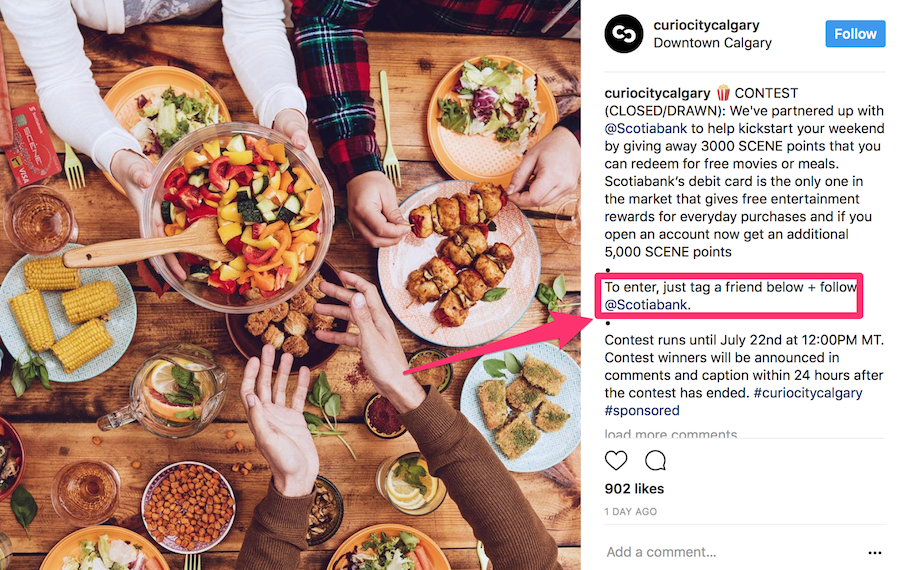
For example, to enter they just need to comment by tagging two friends. These two friends will then see the post and possibly enter themselves by tagging two other friends.
See how this can snowball?
Some successful restaurant marketing competitions have reached hundreds of thousands of people. Could yours?
Katie Sawyer (Eventbrite), has written an excellent article that gives you 6 different ways to throw a competition on social media. More importantly she dives into how to avoid social media content fails with tips and rules to abide to.
18. Take advantage of hashtags on social media
Learning how to use hashtags on social media is a great way to build awareness of your brand and to increase engagement which will lead to more customers.
The first thing you need to do is come up with 2-5 hashtags that are unique to your restaurant and use them consistently.
One or two should be your brands hashtag/s and the others for your local area.
This will encourage your followers and customers to use it as well. This increases engagement and builds a community of customers because hashtags can be searched.
Also, you should have fun with hashtags by jumping on the hype of existing popular Twitter hashtags like #FridayFeeling or inventing your own, hashtags are a great way to have some fun with fans.
Here are 56 of the best hashtags for restaurants from Jessica Miller (Shortstack).
19. Show off your staff
An indirect effort for successful restaurant marketing comes in the form of happy employees. Happy employees say a lot about your business. Your followers on social media and customers will take notice if you show them off.
Joyful workers are also more likely to go above and beyond in terms of customer service which you will benefit from in terms of word of mouth marketing.
You are also far more likely to get positive reviews.
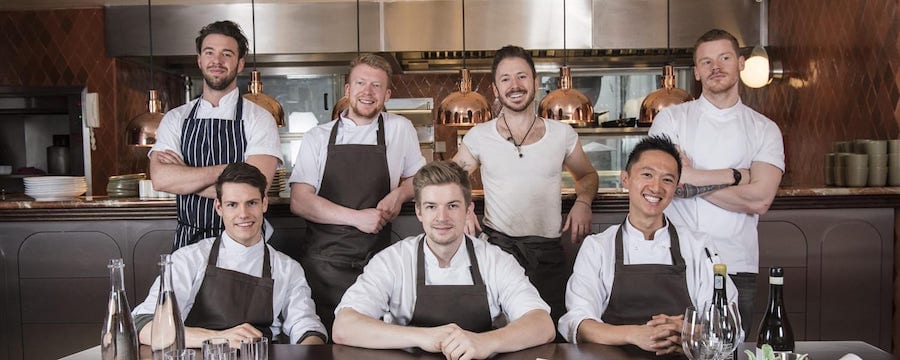
‘Thanking your employees is probably the easiest thing you can do, yet it’s so often overlooked. Be liberal with your thanks to show staff that you truly appreciate the work they do. A staff that feels appreciated will give you their best.’ – Lorri Mealey (The Balance).
20. Automate the Twitter-Sphere
Twitter is making a huge come back so should be considered to be included in your restaurant marketing campaign.
More people are Tweeting than ever before.
It’s become a very important platform for restaurants to be active on. Customer complaints can be responded to and you can showcase your restaurants latest happenings.
Brad Bortone (Upserve), has 10 top tips for restaurant social media marketing that you can follow.
‘Don’t get frustrated if your followers list is a little lean the first month. It takes time.’
It’s true, your Twitter account following will grow in time, be patient with it and stick to it.
Twitter doesn’t need to suck up all of your time either. Tweets can and should be automated and scheduled for optimum times when your customers might actually want to make a booking.
21. Pin your food photos on Pinterest
Like Instagram, Pinterest is incredibly visual so it’s another powerful platform for showcasing your restaurant’s best photos.
Corey Eridon (nextrestaurants.com), correctly points out that businesses and restaurant owners are still not taking advantage of Pinterest in their restaurant marketing campaigns. Here’s his formula:
‘New and popular social media platform + A bunch of businesses that are too scared to use it = Big returns for the early adopters.’
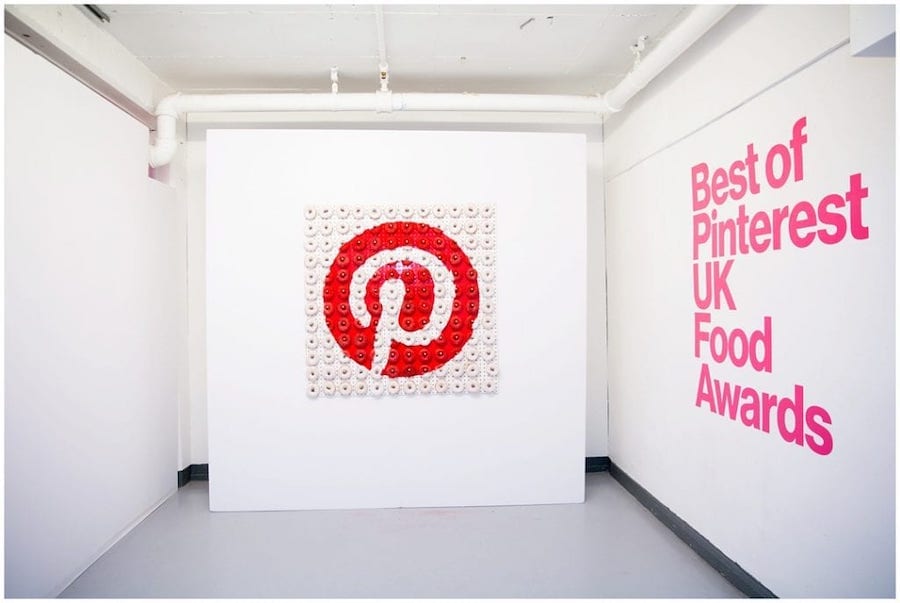
Don’t be scared and follow Corey’s guide in getting started with Pinterest and find out if it works for your restaurant.
The basics are you can pin photos of your best dishes that you can link to your website and social media.
Pins are then pinned by other users and re-pinned which creates an endless marketing cycle for your restaurant.
Make sure that your name and brand is attached to your pins. That way when people come across them, they know exactly where to go to eat them.
22. Pay for geo-targeted ads
Facebook, Instagram, Twitter and Bloc are platforms where you can pay to reach a highly targeted audience in your local area, referred to as geo-targeting ads.
You create an ad creative, choose your audience and pay for clicks, impressions or a specific event like a table booking on your site.
You should trial these services with a small budget first (you can get started with less than £100).
This way you can learn all the different techniques and best practices before spending more. Even if you outsource this to a 3rd party it’s a good idea to get a basic understanding yourself.
Why geo-targeted ads?
Most people are looking for restaurants close to home, so you’ll get the most value out of your budget if you spend on geo-targeted ads.
It’s more expensive when you target a more specific audience. But because this target audience is the most relevant to you, you will also see an increase in conversions, which is better for your business, Chelsea Allenby (Resto Connection).
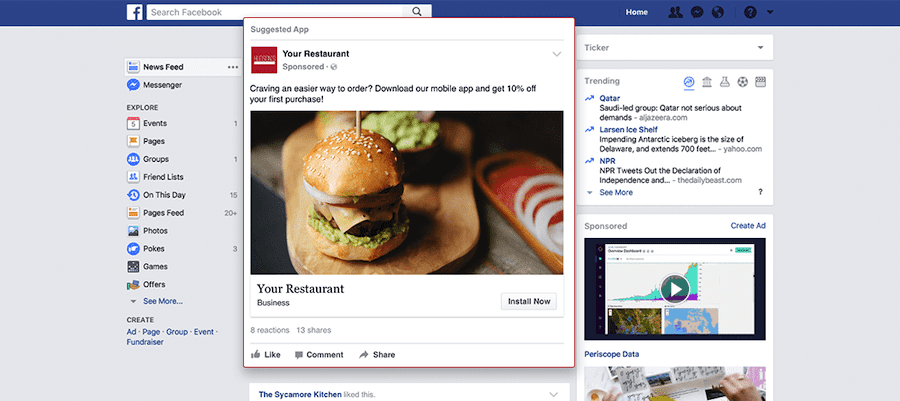
Geo-targeting ensures that only users in a specific radius see your ads (removing non-relevant clicks).
Although targeted ads can be a lot cheaper than traditional advertisements, like billboard advertising, it’s sometimes difficult to know if you’re actually getting the results you want, a customer in your venue, spending.
It’s important to track the analytics to see if the results are actually worth the money.
Pro Tip: You should run ‘specific’ campaigns with a clear purpose and set up a method of being able to track the results outside of the specific platforms analytics.
For example, you could advertise a ‘buy one get one free’ dish in your restaurant exclusive to the ad campaign. At the end of each week you could see how many of these were ‘cashed’ in and compare them to your analytics.
This is a good way to know if it’s actually working or not.
23. Understand restaurant re-targeting geo ads
Re-targeting is huge in the marketing world and it can work for restaurant’s too.
For most website’s, they get thousands of visitors every month and only around 1%, on average, complete the action they want their visitors to do.
In a restaurant’s case, that’s usually to make a booking.
However, unfortunately people visit when they’re not quite ready to book. For example, someone may land on your website from your clever new ad in a bus stop on a Sunday night. They were curious so visited your site on their phone, but their bus arrived 1 minute later. They completely forget about the ad and forget they were about to look.
Usually this visitor is lost forever and they are just another stat that ads to the 99% bracket.
Enter ‘re-targeting ads’.
Re-targeting ads are super clever as they ‘catch’ that visitor from the bus stop via a pixel and then throw ads at them for a period that you set.
Facebook, Instagram and Google all have re-targeting ad capabilities and they should be set up immediately.
That person at the bus stop can be advertised again, by an ad you choose and continously so, until they book.
That’s really smart marketing.
24. Become a Google AdWords expert
You now know that a very high percentage of the population is searching for restaurants to attend on their mobile and desktop.
Google, of course, is the platform most customers are using to search for restaurants. It’s one of the most important elements of successful restaurant marketing.
Google Adwords is Google’s answer to geo-targeted ads.
When someone searches for ‘mexican food in London’ on Google you can pay, using Google Adwords, to be at the top of the search results for that search phrase.
That customer can then click on your website and make a booking, it’s as simple as that.
You can use Google Keyword Planner to find the keywords that are relevant to your restaurant.
Relevance is key, there’s no point in your restaurant appearing for ‘Indian restaurant in London’ if you’re a Lebanese restaurant in London.
Google Keyword Planner will tell you the forecasted search volume and historical search volume for phrases that you enquire on, so you can get a rough idea of how many potential customers you could have from Google.
Use a simple spreadsheet to understand whether you will get the results you want from Adwords. You can see if this method of marketing is then affordable or not for your restaurant, Ryan Andrews (Eat).
Pro Tip: Google Adword’s can be a bit daunting at first because it’s been developed over the years to have a lot of features.
Google have an amazing free customer service team that are ready and waiting to help you get setup so you can get the best results from it. Book a time slot with a professional as it’s well worth it.
25. Dabble in influencer marketing
Influencer marketing has been around for a few years since the rise of Instagram.
In terms of restaurant marketing, it mainly involves tapping into the foodie market and getting influencers to post photos of your dishes and restaurant. They already have a loyal following that will listen to their recommendations and advice.
The easiest way to get influencers to promote your restaurant is to invite them to come and try it for free.
Have the agreement in place that they have to post photos on their platforms and give an honest review. Make sure that they tag your restaurant and the content is of high quality.
Potential customers will pay attention and be far more likely convinced by a influencers post.
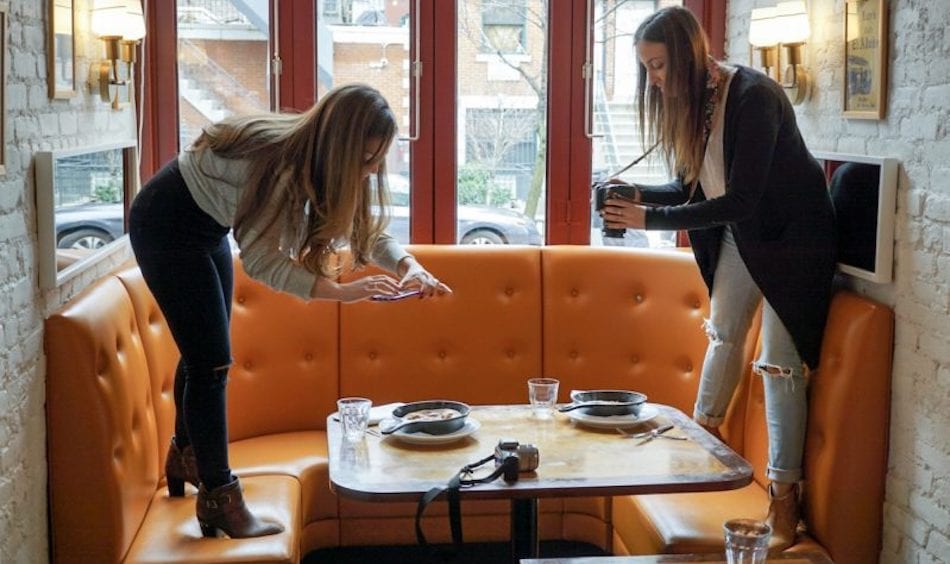
Influencers have an advantage over ‘paid geo-targeted ads’ because they are from a human referral and not just an advertisement by a platform.
‘Influencer marketing drives a better-quality customer than PPC to your website, as they are further along in their buying cycle and are more likely to consider and purchase due to the third-party influence.’ Alicia Russell (Onalytica).
92% of individuals trust referrals from their peers over advertisements.
Individuals don’t care for ‘salesy’ ads from advertisers. They trust their friends.
Utilize content that normal individuals post to advance your image.
We recommend you don’t just agree to one post. Agree to get a couple of posts, a story of the night, some Tweets and a plug on Snapchat too.
You can even turn your current customers into influencers by incentivising them with a platform like Ttagz.
Influencers are usually on multiple platforms so make sure you get on all of them. Kathi Kruse has written a very useful article on the ‘power of 7 and social media.’ It’s well worth a read.
If you get amazing results from one influencer you should keep inviting them back for more, with the same agreement.
If their followers see multiple posts about your restaurant then they will truly start believing it’s worth a visit.
Top Tip: You can make every customer an influencer by offering an ‘Instagrammable’ welcome cocktail or amuse-bouche. If it’s Insta worthy, and it’s posted, those customers are promoting your restaurant to their followers.
26. Promote user-generated content
People are constantly taking photos of their food and posting it online, and they love doing it. As a restaurant you will have access to lots of user generated content. Or at least you should have.
It’s an amazing indicator whether your restaurant is on the right track.
If customers are promoting your restaurant this is just like them giving you a postive review and makes you seem like a trustworthy and reliable brand.
If people are attending your restaurant and not taking photos, then you should know something is not right.
User-generated content is also a great way to increase engagement and create rapport with your customers because you can re-post them.
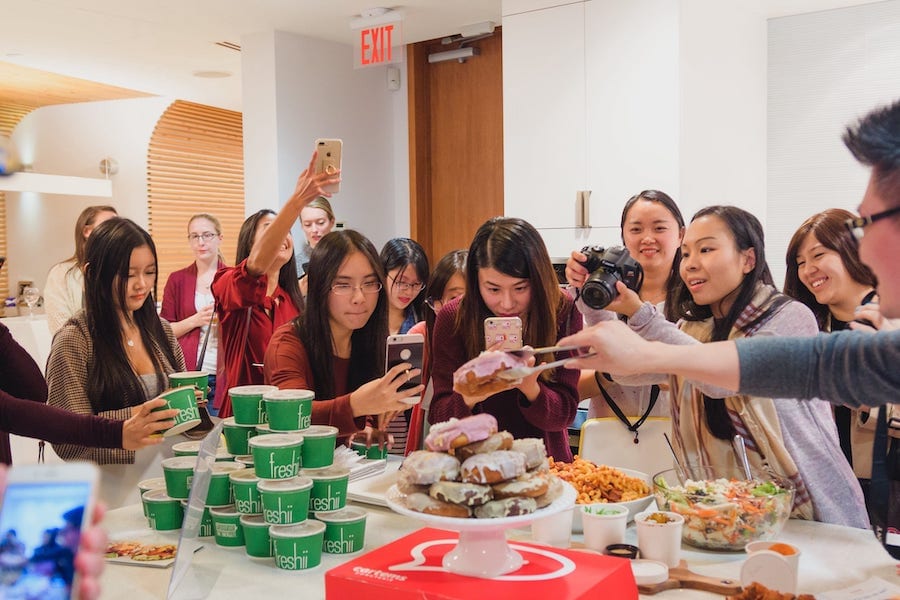
By using content that your followers post it will save you time and therefore money.
Utilizing content from your following encourages you as a brand to connect with individuals on a human level and makes you seem to be trustworthy.
Check out this hilarious article from Kate Bernot that shows the lengths some restaurants are going to for user-generated content.
To take the user-generated content idea to the next level you could host a photo competition by asking customers to share their favourite meal at your restaurant.
You can then offer lucky winners’ free meals in your restaurant as a prize.
This will not only entice customers to your restaurant to take the photos in the first place, but it will also leave you with hundreds or thousands of photos that you can use in the future.
Not to mention the happy winners who will then spread word.
27. Start a Blog
Blogging may seem like a lot of work, but it doesn’t have to be.
It’s quality over quantity so you don’t have to post that often, if you don’t want to.
It’s a great way to build a loyal fan base.
You could share recipes, cooking tips and tricks, share the story of your restaurant and announce news.
Writing a blog actually has many benefits.

The biggest being that it increases your chance of being displayed at the top of Google’s organic search results.
It also gives your social media accounts more depth as you can share your new content on them.
Another benefit that isn’t mentioned too often is that it creates an opportunity to engage with real people that might be useful for your business.
For example, you could mention and link a journalist who has written a healthy food article that relates to your restaurant.
This then gives you a reason to reach out to this journalist so you can build a relationship with them which could lead to your restaurant being mentioned in a popular medium.
28. Aim fo Google’s ‘Local Pack’
Google’s local pack is the top 3 geographic results that show at the top of Google.
If you go and type into Google, ‘Best restaurant’s in London’ this is what will appear:
These 3 results are probably going to get clicked on first by the user. This is why it’s so important to aim for Google’s local pack and be in that top 3 where you can.
To help your chances of getting in the top 3 results, you need to show Google that you’re a reputable company, with a focus on quality.
First you need to make sure your site is optimised. This means loading times are fast, your mobile friendly, have a contact page and have testimonials included. You should include keywords on your site as well which people will realistically search.
Next you need to optimise your Google My Business page by making sure all the information is filled out and correct.
Then the final stage, which is also one of the most important, is to show Google you’re a reputable company by getting a ton of positive reviews on Google.
It also helps if those reviews include the keywords that you want to rank for.
For example, if someone has written ‘this is the best restaurant I’ve been to in London’ within their review, this will help your restaurant appear for ‘best restaurant in London’.
Stasia Avet (SE Ranking) has put together a really useful guide and checklist for how to get to the top of Google’s Local Pack.
29. Get handy at SEO
SEO, local SEO more specifically, is vital for restaurants.
When people Google restaurants in your local area, you need to be appearing near the top of the search results. If you’re not appearing at all, you can’t expect to get much business.
Appearing at the top in your area is a huge competitive advantage over your competition because you will be clicked first.
SEO takes time, commitment and knowledge but if you’re willing you can get lots of free customers, so it’ll pay dividends in the long run.
There’s a lot of credibility that comes with being ranked well by Google, so your potential customers will land on your website trusting you from the beginning.
If you’re struggling to rank your blog posts or pages in Google’s organic search results, then you can try and reach out to the website’s that are ranking.
For example, going back to the example of ‘best restaurant’s in London’, the articles appearing in the organic search results are articles that list the top restaurant’s.
You can try and reach out to see if you can be included in these types of articles.
30. Find restaurant & food bloggers
Bloggers are similar to social influencers; except they write articles, usually reviewing a restaurant.
Food bloggers have the power to make or break a restaurant, so if you do invite a food blogger to your restaurant, make sure you offer an amazing experience.
‘Foodies’ are your best social influencers for word of mouth, and they follow food bloggers.
If you can get the food bloggers to write an article about your restaurant, then you can build an army of food influencers which can result in incredible results for your business.
To find bloggers you can go on Instagram and use hashtags to find them, e.g. #foodblogger.
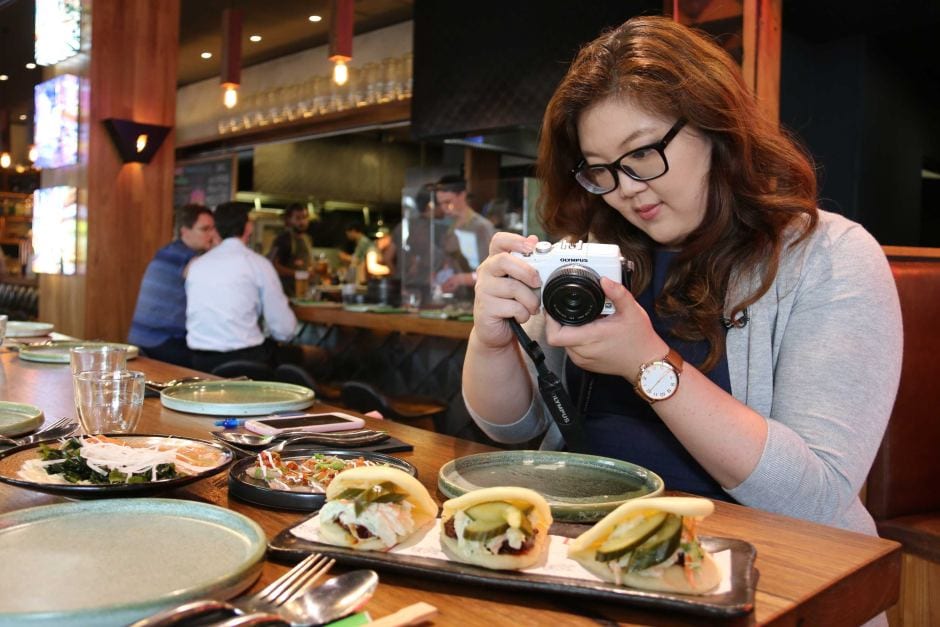
Make sure that they are in your area. There’s no point in reaching out to them if they aren’t less than an hour away.
A lot of them have their emails in their profiles so you can build a database and then reach out. It’s a numbers game in terms of results.
Take the time to build a big database and be persistent. Send personalised emails to each one every 3 months and some are bound to take you up on your offer.
You can’t ask for a positive article because that would be dishonest, instead make sure it will be by offering an exemplary service and serving up delicious food.
Similar method to influencers, you should offer them a free experience of your restaurant as the future profits will definitely outweigh the short-term cost.
‘Developing relationships with food bloggers is one of the best ways to integrate your marketing strategy when it comes to restaurant marketing.’ Nicola Barcellona, (Forketers).
31. Implement loyalty programs
Getting repeat customers is one of the biggest challenges for restaurants.
Most people like to try restaurants once or twice and are then reluctant to come back. There are so many good restaurants out there to try.
Loyalty programs are a great way to increase your chance of repeat customers.
A benchmark for a successful loyalty program is Nando’s. It’s digital, so customers simply present their card and earn rewards on certain milestones that they hit.
The rewards are worthwhile and it’s easy.
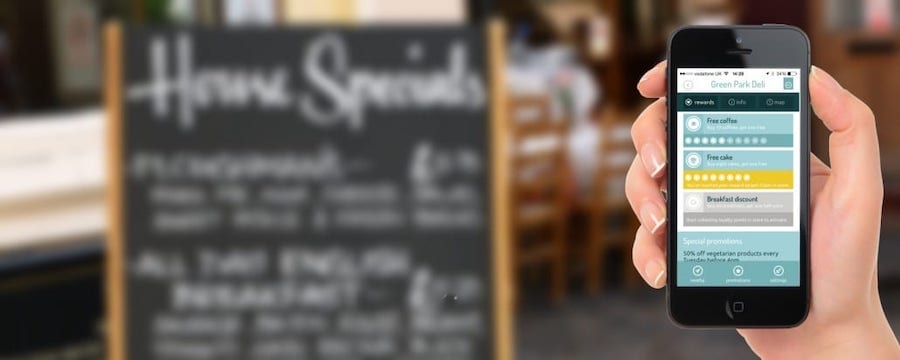
If you don’t want to set up your own loyalty program there are apps out there that can do this for you.
Online apps encourage visitors to check out your restaurant through gamification and reward schemes. They then offer visitors a free purchase or discount for visiting a certain number of times.
If you’re not ready to go digital, you can trial your loyalty program with punch or stamp cards. Each time a customer attends, you simply stamp the card and once they have visited enough times you can offer them a reward.
Top Tip: You can also have a separate loyalty program for influencers. The more they post on social media, the more you reward them; this is a good way to get repeat promotions from your army of influencers.
32. Formulate a food influencer loyalty program
The business expression goes that ‘if someone sees something 7 times, they will buy it’.
With the rise of social media this figure has argueably come down.
That said, it’s still good practice to try and push your advertisements to the same group of people more than once.
If you get 7 different food influencers to promote your restaurant once to their followers, it’s likely their followers will only see this ad once. It might therefore prove ineffective.
Instead, if you get the same influencer to promote your restaurant on 7 different occasions, their followers will really start to believe it’s a big recommendation.
One way to keep this cost down is by implementing a food influencer loyalty program.
For example, you could officially set up a system that for every 7th post, the influencer gets a free dinner with a bottle of champagne.
This means that the first 6 times are free advertising, but the influencer also gets a good ‘incentive’ or kickback eventually.
33. Take advantage of email marketing
Email marketing is an excellent way to reach your desired patrons.
First, you need to build your list of email addresses, there are different ways to do this:
- Create a lead magnet and landing page on your website. This is an enticing pop-up or button on your website that asks for their email address in exchange for a reward. For example, you could offer 20% off the bill if they attend within a month.
- A lot of customers will want to connect to your WiFi (you should offer this for free), but if they want to get on, ask them to submit their email.
- You can throw competitions on your social media or from within your venue. When they submit their entry, you can ask them to submit their email too.
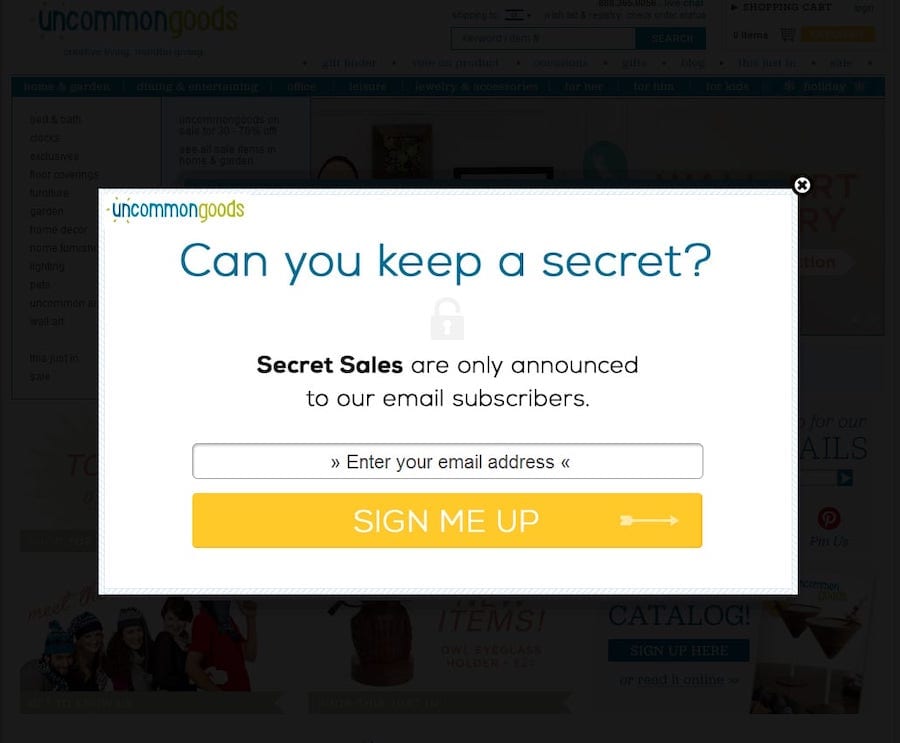
Once you have their email address you can send (the occasional) promotion to entice them to your restaurant.
Always include a hook so your email adds value otherwise you will find your restaurant unsubscribed and your hard work will be undone.
Soribel Fernandez (Blueliner Marketing), suggests as a top tip that ‘Once you have built your email list, you can use segmentation to make offers to those on your list based on gender, drink preferences, the day they prefer to come into the bar/restaurant, and more.’
For some great ideas for email templates specifically for restaurants check out Brandon Hull’s ‘5 ideas for better email marketing templates for restaurants.’
34. Use SMS Marketing
SMS marketing isn’t for every restaurant as it has its benefits and downfalls.
First, the benefits.
It’s incredibly effective when used by the right type of restaurant and used in the correct way in terms of time.
Its effectiveness is down to the impact of the medium (who doesn’t check their texts), so the text is very likely to be seen and taken onboard.
If you have a delivery service side to your business and text on a Sunday night (the most popular nights for takeaways) you’re likely to get good, worthwhile results.
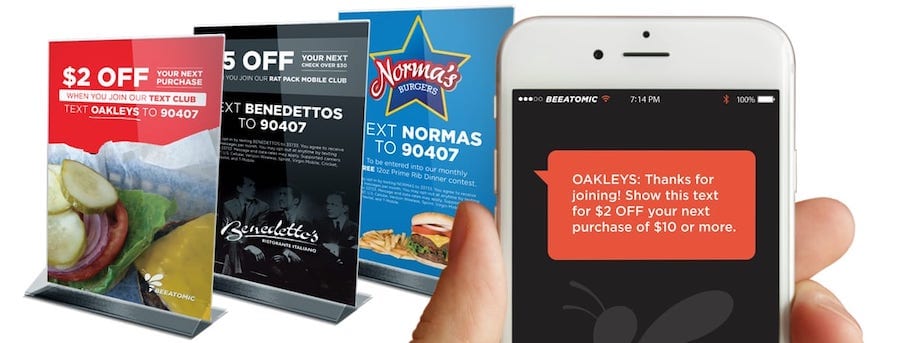
However, the negatives come with how SMS marketing is received.
Many takeaway joints such as Domino’s etc have caught onto the fact of the effectiveness of texting on a Sunday night (with a link to order).
This means SMS marketing is associated with cheaper takeaway brands. If you’re not churning out cheap pizzas then it could de-value your brand experimenting with SMS marketing, so tread with caution.
If you are going to adopt this medium for marketing your restaurant then you should be careful not to text too much and only text at optimum times when orders will be made.
Texting around the holidays and with special deals is good practice too.
Here are 10 examples of restaurants using mobile that you could benchmark from.
35. Host events
Your restaurant should be worthy of hosting different types of events.
From charity events to product launches and birthdays. These types of events bring in large crowds and do wonders for your social media reach as usually many photos are taken.
These types of events are more likely to attract celebrities, influencers, journalists and bloggers so it’s a good chance to get free publicity.
Allowing your venue to be available for venue hire is a good idea if you’re always quiet on certain days, e.g. Monday’s or Tuesday’s.

There are sites such as Hire Space, where they will list your venue for you and you can choose when the venue is available for hire.
Top Tip: Chaz Van de Motter, Elite Marketing Studios, recommends to host an event at your restaurant specifically for local influencers.
Offer free food and drinks, along with VIP treatment during the event, in exchange for a story or exclusive content.
36. Form partnerships
Partnering with different brands, sports team and clubs could secure a constant stream of revenue for your restaurant.
Offering a percentage discount to these organisations results in a win-win.
You could even arrange it so it’s valid when you’re quiet, so it fills empty seats when nothing else is working.
Buddha Bar in Knightsbridge London has partnered with BMW.
BMW’s staff get a 20% discount off food. With this partnership in play both brands plug each other on their social media so lots of benefits come from it.
Try and partner with a local business or two and you could have a constant stream of business.
37. Consider online food ordering mediums
The world is being re-built for convenience.
People are turning to apps and online mediums to order their food so it can get delivered.
This isn’t only for the pizza joints or Chinese restaurants anymore.
From a couple of taps on a smartphone, a user can order food from top restaurants and have it delivered within 20 minutes.
Pretty much every cuisine can be ordered online now and it’s an excellent extra revenue stream for your restaurant business.
You can keep the experience high-end by keeping it exclusive to certain apps like UberEats, Just Eat or Deliveroo.
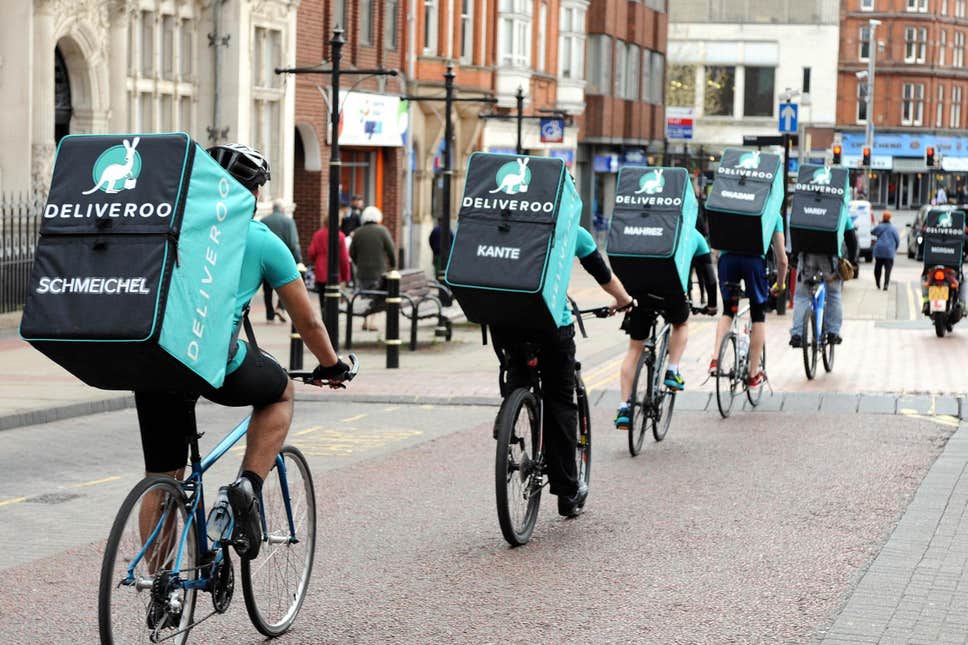
These apps have a good reputation and fast delivery infrastructure which means you won’t lose quality in your service.
Mansoor Iqbal (Business of Apps), shares that ‘working with Deliveroo has been worth a total of £470 million ($582 million) in revenue to partner restaurants and supply chains in the UK.’
And to put that into perspective, they only have 23% of the market in the UK and U.S combined..
In today’s online-driven environment, convenience is very important. Many online delivery services make it incredibly easy to order food and get it delivered incredibly quickly.
Some customers may even find your restaurant for the first time through services such as these!
38. Offer freebies, coupons and discounts
People love receiving things for free.
As a restaurant you have the ability to give people what they really want for free, food.
If your restaurant is positioned on a busy road with a lot of foot traffic, you could offer free samples to lure people in.
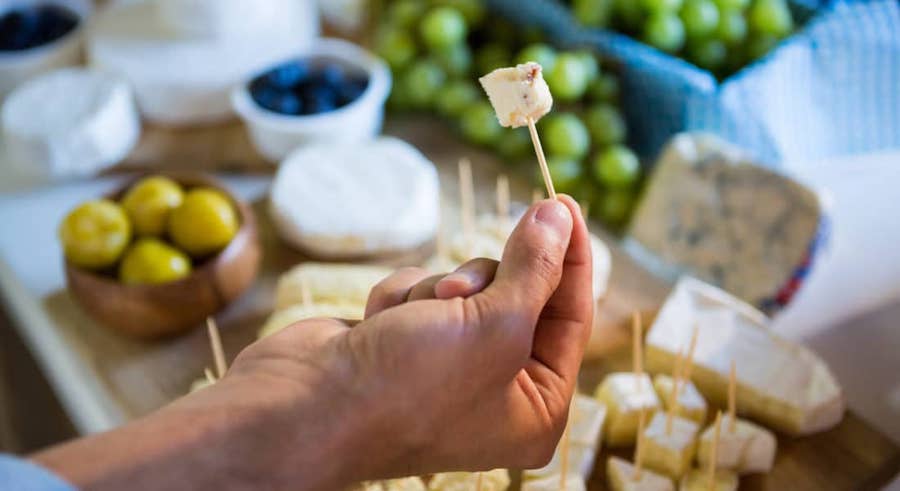
Offering freebies goes further than just getting customers to come to your restaurant in the first place. You can get social media content, better reviews, email addresses, word of mouth spreading and lots more.
McDonald’s ran a campaign at Reading Festival where they offered free nuggets to festival goers if they took a picture with a giant chicken nugget.
They could then use these snaps on their social media. The campaign was a huge success because it created buzz online that reached millions of people.
Top Tip: Try advertising a discount on sites like Groupon. These have thousands of freebie and discount hunters waiting to find the next best deal.
Limit the number of sales via this route though as it will cost you due to the hefty portion of sales they take.
39. Experiment with pop-ups
There are lots of events nowadays like food festivals where established restaurants with permanent addresses are popping up.
Offering a few staples from the menu means you can reach different people in different locations and is great for brand awareness.
If you’re thinking about opening a new restaurant as an extension from your original one, you can trial it with a pop-up first.
Just because your restaurant is a hit in one town, doesn’t mean it necessarily will be in another.
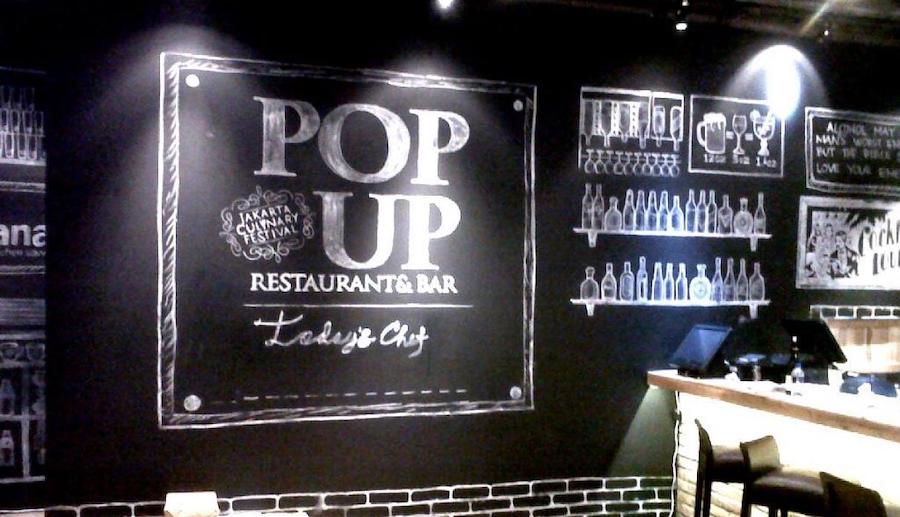
Fredirik Nielsen (Billetto), has written a really useful guide called ‘how to start a pop-up restaurant in 10 steps’.
40. Get fresh off the press
Everyone who owns a business aspires to getting free press and restaurant owners are no different.
Getting in CN Traveller or Culture Trip can go a long way for your restaurant.
Influencers and celebrities could be readers and it goes a long way for SEO (getting reputable backlinks).
Top Tip: when you’re mentioned in a news outlet or magazine, show off your good publicity on your website and your social media.
You’ll increase engagement as fans will help spread the word, and newcomers will be encouraged to visit in person when they see trusted sources celebrating your restaurant.
41. Go mobile with a food truck
Although not relevant for a lot of different types of restaurants, going mobile with a food truck is big business.
Starting a food truck isn’t as straight forward as one might think.
It can be very pricey and there are different laws surrounding where you can park your truck in different geographical areas. If you go down this route, make sure you’re up to date with local laws and permits.
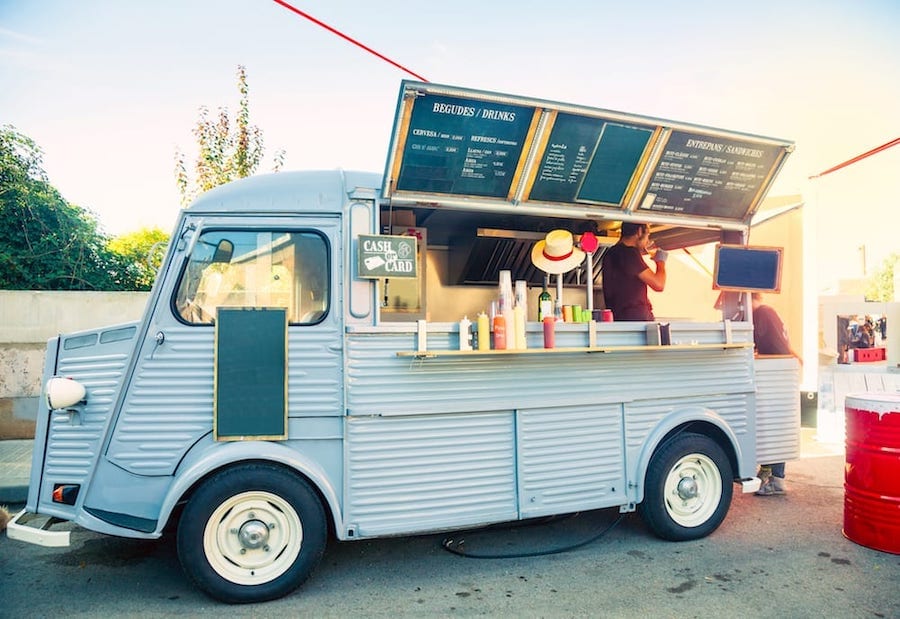
A food truck enables you to dish out your food to customers you might never normally come in contact with.
You can greatly extend your reach, build more press, and acquire new customers who become fans of your brick and mortar restaurant as well.
42. Set up Google Alerts
Google Alerts are alerts Google email you when a specific term is used on the internet. They are very useful as they can notify you when your restaurant name (or other designated keyword term) appears in a new piece of content on the internet. This makes it easy to keep tabs on who is talking about you and your news.
43. Implement online reservation tools
There are a number of online reservation tools you can tap into, such as SevenRooms. They make it seamless for customers to make a booking online.
The biggest benefit about using software such as Open Table is that they already have a base of loyal customers that they can drive to your restaurant.
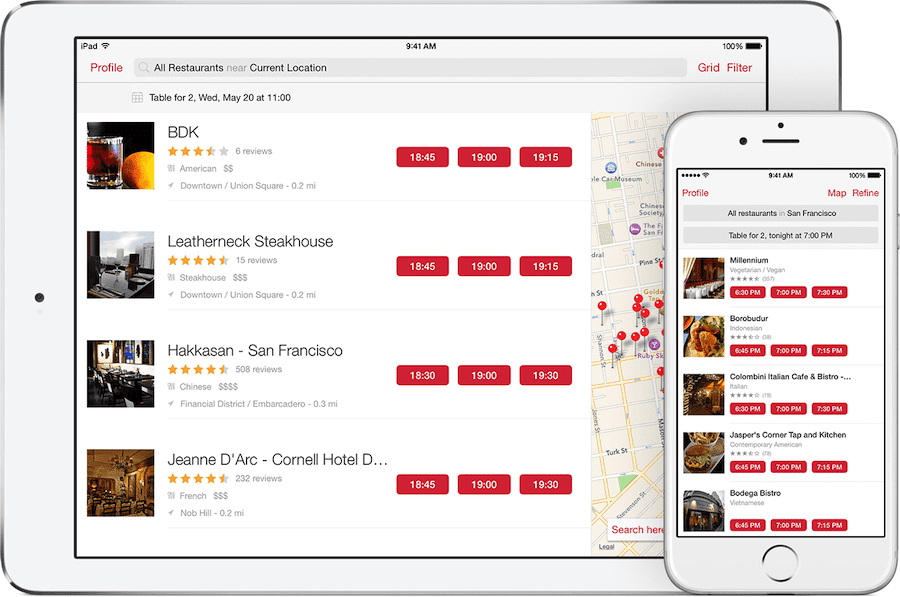
Here are the some online reservation systems available for restaurants you can explore:
44. Create a gift card for your restaurant
By allowing customers to buy gift cards it means they can gift them to other people, for birthday’s and Christmas for example.
This is a clever tactic for finding new customers and is basically a referral, wrapped up nicely.
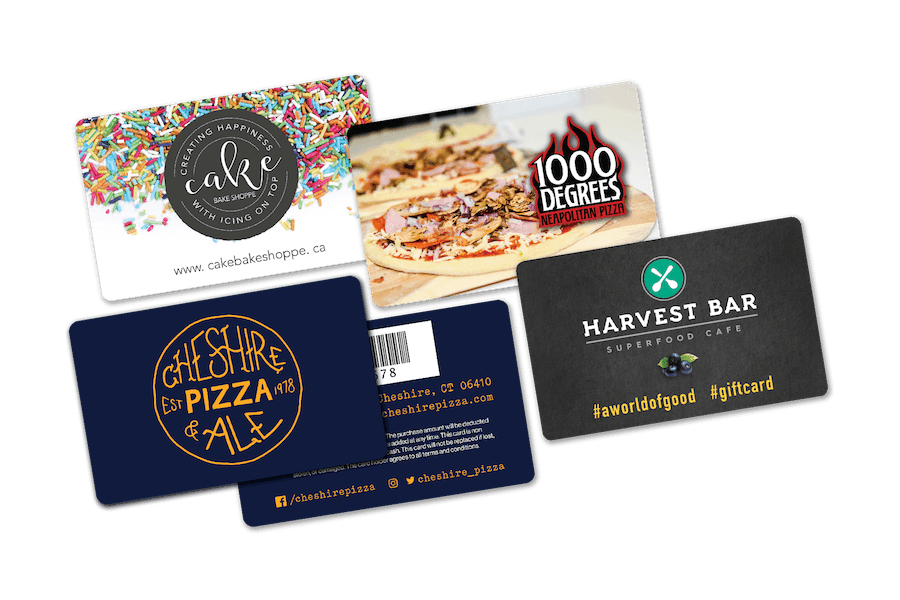
Once you have gift cards made you can use them for giveaways, competitions and to give to celebrities, influencers and bloggers.
That concludes our restaurant marketing and advertising ideas. Hopefully you can put these 35 restaurant marketing tips to good use.
45. Become a super restaurant
A super restaurant isn’t referring to a restaurant being good.
In restaurant marketing terms a super restaurant is one that has multiple elements, forming one super restaurant.
For example, a super restaurant may have a quiet dining room for dates and business type meetings. But they may also have another space elsewhere that’s a cocktail bar.
Then at 10pm a room downstairs could be used as a nightclub. So all the diners and drinkers from the cocktail bar can party the night away.
Turning your restaurant into a super restaurant can be very rewarding in respect to marketing because you can appeal to lots of different groups of people.
You need to be careful with your messaging and brand values as you don’t want your super restaurant to backfire in terms of creating a negative experience.
If lots of people are drunk in your restaurant, this may create an awful experience for the diners wanting a quiet dinner.
A super restaurant is most effective when you have the space to create one. By seperating your restaurant into sections, you can avoid any groups overlapping.
46. Craft unique restaurant experiences
A study by Harris Group found that 72 percent of millennials would rather spend money on experiences rather than on material items (Inc).
Although the focus should always be on the quality of your food, creating a unique experience is super important as well.
You need to think about how your restaurant can craft a unique experience for your diners. If you can achieve this, people will tell their friends and your bookings will skyrocket.
Heston Blumenthal is a chef that understands the importance of giving his diners a unique experience.
He has a scientific approach to cooking and creates wonderful creations with his food. His food is both delicious and fun to eat – using experimental style presentations. Going as far as adding smoke to his dishes!
47. Make sure your content is to a very high standard
Your content across all of your restaurant marketing channels is a reflection of your restaurant.
By making sure every single piece of content you use is to a very high standard, people will associate this with your brand.
Even if you’re a fast food restaurant, serving extremely cheap food, if your content is to a high standard, people will assume you’re a decent fast food restaurant.
The easiest way to check whether your restaurant’s content is to a high standard is by asking 3 other people if it is or not.
If you can’t come up with good content yourself, then it’s best to outsource it rather than uploading a piece of content that’s average.
Don’t be cheap with your marketing, it’ll damage your brand.
48. Work out Snapchat
If one of the groups of people that visit your website are between 16-24, then Snapchat marketing should definitely be considered.
Millenials currently have the most spending power in the world, and Gen-Z after them will be your future customers.
Snapchat may be daunting at first if you’re not on it, but it’s relatively straight forward.
Rather than creating an account and creating content for your followers, we recommend Snapchat’s advertising. You can do this but you’ll probably struggle in getting people to follow your account, and time is money.
Instead, you can create ads for your restaurant and reach your exact target audience.
Snapchat have different placements but the two we recommend are ‘Snap ads’ and ‘Geo-filters’.
Snapchat ads are created and appear in the two most used features… chats and stories. A user can then click through to your website.
Geo-filters are incredibly fun and engaging ads that appear as an ‘option’ for your customers to use when they’re in your restaurant taking photos.
To setup these up you select the radius around your restaurant. This means that this filter will only be available to those within that radius.
You can even get super creative and create an AR lense that is even more engaging than a ‘sticker’.
Taco Bell successfully ran an AR lense geo-filter campaign, which turned faces into a Taco. The campaign was a huge success making the restaurant millions, whilst bettering their brand awareness.
49. Try Tik Tok
Tik Tok has taken the world by storm and is now the most downloaded app in the world.
Unlike Snapchat, it’s actually worth creating an account and creating content for your restaurant. This is because unlike Snapchat, your videos can be seen by anyone, not just your followers.
This means that you can reach more people for brand awareness.
As well as coming up with your own videos, Tik Tok has it’s own advertising platform.
This means you can create videos and pay to reach your exact target audience.
If you’re not up for creating your own vidoe content, then you can reach out to people who ‘get’ Tik Tok. Ask them to create content that will go viral on their accounts.
50. Use videos in your restaurant’s digital campaigns
Video is in high demand right now. People want to watch stories, laugh and to be easily entertained. Photos just don’t have the same effect as videos.
Tik Tok is largely popular because it recognised this trend.
You need to create videos for your restaurant as you can upload them to multiple channels. One video can be shared to Tik Tok, YouTube, Facebook, Twitter, Instagram and Snapchat.
The reach of videos can be incredible. It’s also 20-30% cheaper to advertise with video on Facebook and Instagram, so there’s that too.
Start creating videos for your restaurant and watch you marketing really go to the next level.
51. Sponsor local organisations
Getting involved in your local community will certainly have some marketing benefits for your restaurant.
Afterall, your customers are more likely going to be people who live locally.
One way of ‘giving back to your community’ is by sponsoring local organisations.
This might be a sport team or school building. Whatever it is, make sure that it’s relevant in terms of your target audience and it results in an increase of bookings.
52. Put themed occasions in your calendar
St Patrick’s Day and Valentine’s Day aren’t the only ‘events’ you should be putting in your calendar. There are actually hundreds of special events every year.
For example, it seems like every food item has a ‘national’ day, e.g. national donut day.
It’s important you have all of these recorded as it can be super useful in terms of marketing. Usually hashtags and keywords ‘trend’ and go viral on such days.
In this example, you might want to add a donut inspired dessert in the lead up to national donut day. Then on the day you can create content using the hashtag #nationaldonutday.
This then has the potential to be seen by thousands of people, and some of them might just visit your restaurant because of it.
53. Take advantage of 3rd party marketing
As a restaurant you should have lots of different types of stakeholders who share a united desire for your restaurant to be successful.
You should write down a list of all the different stakeholders you have and see if there are any restaurant marketing opportunities with any of them.
For example, some of your suppliers may have an impressive online presence or maybe they send out a newsletter to thousands of customers.
Seek out these opportunities and ask to be included. And remember, your stakeholders have an interest in your success and if you don’t ask, you don’t get.
54. Try creating a brunch experience
Brunch has been a trend for a while now and doesn’t look like it’s going anywhere.
If your restaurant doesn’t have a ‘brunch experience’ then you’re really missing out on a lot of revenue.
Serving breakfast doesn’t count either. It needs to be a ‘brunch experience’ as this is what people are seeking out.
These brunch experiences usually involve alcohol, large groups of friends meeting up and an all round fun vibe.
For example, Hoppers in London, a Sri Lankan eatery, started an inspired brunch menu that’s super successful.
55. Throw tastings and booze masterclasses
As people are craving more experiences over material items, adding tastings and booze masterclasses to your restaurant’s offering can boost sales.
You can either go down the route of creating ‘packages’ that can be bought as presents or another option is to keep tastings exclusive for competition winners and for PR material.
The first option is straight forward. Choose how often you’d like to host a tasting or masterclass (once a month for example) and then sell the packages on your own website or a 3rd party site like Groupon.
This gives you a chance to build rapport with your customers and you’ll also get a ton of social content in the process.
Another option is to hold tastings for competition winners. If you want to try out a new menu you could launch a competition whereby 10 lucky winners can come and try it out for free.
You can push this in terms of PR and across your social networks, grabbing emails in the meantime from every entree.
56. Start networking
As a restaurant with local customers, networking in your local area can work really well for restaurant marketing.
Not only can you reach customers directly, but you could seek out business partnerships, new suppliers and other stakeholders who will give you a competitive advantage.
You could even host a networking event at your own restaurant. This way you can take full control with the setup and with who attends the event.
57. Create mystery around a secret menu
A secret menu is a PR spin used by many top restaurants.
For example, Mcdonald’s supposedly has a secret menu, whereby customers can ask for certain items that aren’t on the menu.
It works because it’s so easy for news outlets to write about and it’s also a way of getting people talking about your restaurant.
Once a customer has successfully received their food, that’s not on the menu, they are far more likely to promote it on their social media.
This will then be seen by other people and a snowball effect can come into play.
58. Recognise popular trends
It’s imperative your restaurant stays on top of trends.
Imagine if a restaurant didn’t have a vegan option or two in today’s world. They probably wouldn’t be able to survive long.
By recognising trends you can tailor your restaurant to supply any new demands.
You’ll have a major competitive advantage over your competitors if you recognise a trend before they do. Rather than reacting to a new trend, you can be proactive and supply the trend first.
The easiest way to recognise a trend is to listen to your customers. Continously ask for feedback and try and spot trends in what they are saying.
You can also use Google Trends and Twitters trending section to see what people are talking about.
59. Source locally
One trend that’s not going anywhere is being more eco-friendly and living sustainably. It’s also going to grow to the point where it’ll be difficult to ignore and it could hurt your restaurant if you’re not green.
People are already seeking out restaurants that source their food sustainably. This means locally sourced food.
Locally sourced food has a decreased carbon footprint and has many advantages. First, locally sourced food should be cheaper as the delivery cost should be less than food flown in from other countries.
Second, the food should be fresher and better if it’s sourced locally.
Try educating your customers about your locally sourced food by including some information on the menu or on a leaflet placed on the table.
Look no further than Ottolengi and his restaurants if you want inspiration on how to nail educating your customers and offering sustainable options.
60. Formulate a street team
If your restaurant is in an area with a lot of footfall, then you can consider putting together a street team.
A lot of people in these areas will walk until they find a restaurant that they fancy. This decision could simply come down to what it looks like and the location it’s in.
A street team can be used to persuade people to visit your restaurant instead of another.
If you’re going to go down this route then make sure the street team are friendly and have a good hook to persuade people to come.
For example, a hook could be ‘children eat free’, or ‘wine is half price’.
They should also have flyers to hand if someone isn’t quite ready to make a decision yet.
61. Hand out flyers
Traditional restaurant marketing like handing out flyers can still work.
This only works best if no one else is doing it in your area. If lots of different restaurants are using this medium, then people will receive more than one flyer and ignore them all.
However, if you’re the only one then it can be effective because they probably haven’t received a flyer in a long time.
Your flyer needs to include a good hook to help persuade people to come. A special deal and some items from your menu work best.
62. Put posters up
In a similar way to handing out flyers, putting posters up in strategic positions can work really well.
Make sure the posters are placed in a relatively small radius around your restaurant as people won’t travel far to come.
Bus stops, train stations and universities are good examples for where you can put up your posters.
Again, try and use a good hook on your poster, using a special deal and showing off your food.
63. Get on billboards
Billboard marketing is similar to putting up posters, except on a larger scale with more eyes reached.
They are more expensive but look really professional.
Mcdonalds use billboards a lot for their marketing. They can be seen in undergrounds, city centres and even airports.
You can be super strategic with their placements as well.
For example, you could target commuters who you know will end up outside of your restaurant.
Hit them first at the train station they get on at, on the train, then at the train station they get off at as well.
If someone sees your restaurant 3 times from a poster, then they will probably be a customer eventually.
64. Try direct mail advertising
Direct mail advertising works really well for restaurant marketing if you have a delivery option at your restaurant.
It’s simple to setup too. You simply create your material and then set up a mail out with a reputable postal service like the Royal Mail. Your material then gets sent out with the regular circular.
You should be strategic for when you send out the mail out and what’s included in the material.
For example, Friday’s and Sunday’s work best because these are the days when most takeouts are ordered.
The material should include promotions and discounts that your receivers simply won’t be able to ignore.
65. Explore other places you can do display advertising
As well as the common places you can display your restaurant’s advertisements, you should also explore out of the box placements.
First there are places on the internet where you can display your advertisements digitally, beyond Google and Facebook ads.
Think about where your customers might be hanging out and contact web masters directly to see if your restaurant advertisement can be displayed.
Second, there are more places than you think where you can display your physical restaurant advertisements.
You can use a company like Admedia that have multiple options for where you can put your ad. For example, they do ‘venue domination’ where you can take over a bar with your ads. So your ad will be placed on beer mats, in the bathrooms and even on the uniforms the staff wear.
This works well if you know your customers visit venues like this and will visit your restaurant after, before they go home.
66. Create a better email signature
As a restaurant owner you will have hundreds of different contacts that you’ll be in constant contact with. This means you’ll be sending hundreds or even thousands of emails per month.
Not creating an engaging email signature is a missed opportunity.
We recommend you place a call-to-action in your email signature to perform an action, such as following your restaurant’s Instagram page.
This could result in thouands of extra followers, which helps with social proofing your venue in the future.
67. Invite key people for free food and drinks
You have a restaurant space that obviously sells food and drink. You should use this to your advantage by inviting key people for free food and drinks.
You can roll out the red carpet and give people a special experience in return for something that will help your restaurant’s marketing.
This may be an influencer who would be more than happy to do a social post for you, or a CEO who has 2000 staff members in a nearby office.
Seek out people who can help your restaurant marketing efforts and invite them for dinner. In the long-run ths is how to get a serious contact list that will only boost your restaurant’s sales.
68. Create DIY kits for some of your menu items
This restaurant marketing idea was one positive that came out of the Corona-virus pandemic.
As restaurant’s struggled with their doors closed and their food not travelling well once cooked, they created DIY kits that people could cook at home.
It should be considered as it’s an extra revenue stream for your restaurant.
Simply put together ‘packages’ from your menu and send people the ingredients. With clear instructions people can eat fresh food from your restaurant without visiting.
It works really well in terms of restaurant marketing because people can impress their guests. If someone has a party of 8 and only 2 people have heard of your restaurant, then you’ve reached 6 new people and made a good sale.
69. Wish people Happy Birthday
Wishing people Happy Birthday is an old marketing technique that still works today.
Who doesn’t love being wished a happy birthday. When it comes from a company, it shows that you care and it’ll certainly be appreciated. Especially if there’s a present inside the message too (in the form of a discount for example).
It’s also really easy to get a database of birthdays, simply ask people their date of birth when they give you their email address. This may be from your lead magnet on your site, a customer signing in to your WiFi or when they enter one of your competitions.
Don’t miss out on an effective restaurant marketing technique and always ask for their date of birth.
Email campaigns that wish someone a happy birthday in the subject line have some of the best open rates in the world too.
70. Create good signage
Signage shouldn’t be neglected.
Just like a book’s cover, people will judge your restaurant based on what it looks like from the outside.
Make sure your restaurant’s signage is clean, clear and beautiful.
If your restaurant gets footfall, then this step definitely shouldn’t be neglected.
You should also try and put out boards with enticing messages and offers, so when people are walking adjacent to your restaurant they won’t miss it.
71. Advertise based on the weather
This restaurant marketing technique was actually inspired by Subway.
They ran a seriously clever online marketing campaign using PPC mediums like Facebook where the targeting is extremely smart.
They created their ads based on what the weather was. So if it was really hot outside they wouldn’t show hot food in their ads. Instead, they showed food and drink that someone would want on a hot day.
Then on a cold day they would show their hot baguettes and hot drinks in the ads.
This obviously removed a lot of wasted advertising spend and sales were boosted.
Mediums like Facebook has this capability, so seek them out and think how you can advertise based on outside conditions.
72. Have a tourism plan
If you’re in an area where tourists visit then you need a tourism plan.
Speak to your local tourism board and work out how tourists are finding restaurants to visit.
It may be that some use online mediums like Tripadvisor and some rely on leaflets found at the airport. Every single medium has advertising opportunties, so seek them out and make sure your restaurant is included.
Tourists are big spenders, there’s no reason that they shouldn’t eat your restaurant over another.
73. Tease people with your menu
Your menu is your best asset. You need to use it where you can to your advantage.
When you add a new item to your menu, always spread this across all of your restaurant marketing channels. Tease people with descriptions and professional photos so they won’t be able to resist.
A really good tip is tell stories along side your menu items. Why was it chosen? What was it inspired from? Who will be cooking it? etc.
This gets people invested in your menu and will mean more sales and repeat customers.
74. Impress food critics
Love them or hate them, food critics exist.
These food ‘experts’ can make or break restaurants, especially fine-dining and fancy restaurants.
Best practice is to actually pretend that food critics don’t exist and every single one of your customers is a food critic. Because in this day and age with the review system, everyone basically is.
Every single diners experience should be treated as if they were a food critic. It should be perfect.
Then if a food critic does come along, they will be impressed, just like every other single customer you have.
Restaurant’s that aren’t consistent with their food and service, will always eventually get stung by a food critics negative review.
Consistency is key. And continous improvement should always be a focus.
75. Come up with a PR stunt
Journalists won’t write about a restaurant unless the story is newsworthy.
Coming up with a PR stunt is one way of creating an engaging spin that’s easy for journalists to write about.
The fast food chain Pizza Hut came up with a clever PR stunt where they were the first company to deliver pizza to outer space.
They successfully delivered pizza to the International Space Station and it only cost them a cool $1 million to do it.
The PR stunt was a huge success and obviously every news outlet and blogger covered the event, resulting in sales way beyond $1m.
You may not have the budget to perform such a big PR stunt, but even small stunts get in the news.
For example, could your restaurant create the world’s longest hot dog? Or serve the most expensive caviar in the world?
Whatever you come up, you can work with journalists to come up with stunts that are newsworthy.
76. Offer set menus
Offering set menus is a simple restaurant marketing hack that can increase sales.
People are drawn to them because they feel like they are getting a good deal. And it’s a win for your restaurant too because the price points for set menus means you can always profit.
Try offering a lunch set menu alongside your A La Carte menu, as this means their is something for everyone.
77. Host live music
We’ve mentioned in this article before that people crave experiences and not just good food.
Live music can certainly add to a restaurant’s experience as it’s one of the most demanded things in life, after food, but before sex.
Depending on the type of restaurant you are, you can offer music in different ways.
If you are a fine-dining or fancy restaurant, for example, you should consider having gentle and quiet live music.
If you are more casual you could consider having a proper live music set planned for after people have eaten.
Music is definitely a restaurant marketing medium that can help get customers and increase sales when they’re in.
78. Encourage returning customers
It’s a lot cheaper targeting your current customers to come back to your restaurant than it is to seek new ones.
You should encourage returning customers by implementing some simple restaurant marketing techniques.
It can be as simple as creating a business card containing a special offer and giving it to diners along with their bill.
The offer should use ‘urgency’ to make sure they come back soon. For example, the business card could read:
‘Thank you so much for dining with us today. Hand this business card to us the next time you eat here and enjoy $10 off your bill (valid for one month). We hope you can join us again soon.’
Win-win advertising is the key to good restaurant marketing.
79. Restrict your menu
Some restaurant owners get it quite wrong by offering multiple options on their menus.
You’ve probably seen these types of restaurants, they are the average venues you usually find in tourist hot spots.
People are now wise to the fact that if a restaurant has multiple items on the menus (over 20-30), then it’s incredibly likely the ingredients are frozen and not fresh.
Always on your the restaurant’s side, large menus don’t help with table turnover. With so many options to choose from it can take tables over 30 mins to order.
This doesn’t help with restaurant sales in the long-run.
Restrict your menu and put more love into a few items. The food will be better and you’ll get more sales.
80. Remove the currency from your menus
This is a clever little marketing psychology trick.
By removing the currency signs from your menu, people aren’t reminded that they’re spending real money.
Without the currency sign, it’s almost like it’s monopoly money. It’s proven by multiple studies that people always spend more when presented with these types of menus.
81. Serve ice cream
With this one, we’re not talking about adding ice cream to your dessert menu.
If you have footfall walking past your restaurant and you are lucky enough to have good weather, try placing an ice cream cart outside.
It’s not only an extra revenue stream for your restaurant, but it’s also a chance to impress local people for future sales.
If you become the restaurant serving the best and most convenient ice cream in the area, then it can do wonders for your brand image and restaurant sales will boom.
82. Try and create an outside space
People love eating outdoors, so if you can add an outside space to your restaurant, you should.
This will give you more table covers and impress people who are walking by.
During the Corona-virus pandemic, many restaurants had to adapt and create outdoor spaces as people weren’t allowed indoors. Turning patios and even car parks into table areas.
Speak to your local council and see what options you have, as creating an outdoor space, even if you don’t have much, is always a plus.
83. Make sure you have vegan options
Veganism is kicking off all around the world.
In 2016 there were 276k vegans. But in 2019 this increased to 600k. Veganism more than doubled in 3 short years.
With these sort of stats it’s hard to ignore that you must have vegan options on your menu.
A lot of people won’t visit a restaurant because there are no vegan options. Not having vegan options can be detrimental to your restaurant marketing efforts.
Add a couple of vegan options to begin with and track your sales.
84. Make sure you have gluten free options
In a similar case, it’s also imperative that you have some gluten free options on your menu.
It is estimated that 1 in 100 people around the world have some kind of celiac disease, which means they should be gluten free.
Don’t put off customers because you don’t cater to common dietary requirements. Add them to your menu and be open to everyone.
This means that you don’t waste any marketing spend, advertising to people who simply can’t visit.
85. Extend your restaurant to food halls
Food hall are becoming huge.
For example in the UK, Market Halls and Arcade London are very successful. Fancy restaurants have extended their reach with pop-ups in such halls.
People are drawn to them because there is something for everyone. Groups or parties don’t have to eat the same food, but can still sit with each other.
The food halls also do their own marketing so customers shouldn’t ever be a problem.
86. Try guerilla marketing
Guerilla marketing is the advertisement strategy whereby a business uses unconventional techniques or surprise to promote it’s products or services.
The idea is to capture the attention of potential customers and the press for free coverage.
An example for restaurant marketing is Domino’s initiative called ‘paving for pizza’. With the tagline ‘bad roads shouldn’t happen to good pizza.’
They recognised that a problem with delivery pizza is that sometimes the food slips in the box. They cleverly blamed American roads publically and created a campaign to solve both problems.
By recognising a problem that people cared about beyond the company meant that people (and press) took notice.
87. Introduce photo ops
If people aren’t taking photos from within your restaurant then you haven’t set up your restaurant correctly.
Social media should be littered with pictures of your restaurant and food.
There are two types of restaurant photo ops you can create.
The first one is creating picture worthy food that people won’t be able to resist taking photos of.
The second is related to the interior of your restaurant and how you present food in the windows and at till spaces.
Can you create a flower wall? Can you display pastries in the window beautifully? Maybe there’s a secret photo booth inside a bookshelf?
All of these are simple ideas that will get people snapping and recording.
The next step is to encourage your customers to use specific hashtags. This is so you can easily find the content online so you can re-post them on your own feeds.
To do this you can keep using the same hashtags on your own profiles so people take notice.
People love to be featured so they can soon learn your favourite hashtags for the chance to be re-posted. You could even include these hashtags on your menus and around the venue, like in your bathrooms.
88. Showcase your chefs with an open kitchen
Open kitchen restaurants are cool.
They have the ability to transform a restaurant’s atmosphere into a fun and high tempo space. This is great for restaurant marketing because word of mouth is based on positive experiences.
Other benefits include more photo ops as people are more likely to take photos of your chefs in action.
They also keep chefs in line. As kitchens are usually high-stress zones, by making your kitchen open, they have to remain professional at all times and not let their stress get the better of them.
This can lead to happier staff and better food.
89. Work on the restaurant’s atmosphere
Creating a positive restaurant atmosphere is vital for success.
Like we’ve mentioned in this article before, people want and crave good experiences.
Your restaurant’s atmosphere needs to positive, otherwise your results could suffer.
To create a positive atmosphere, first you need to make sure your restaurant is always busy. There’s nothing worse than a soulless empty restaurant.
Next you need to implement different techniques for creating a good atmosphere. Happy staff, music, cleverly spaced furniture and lighting are all things you need to think about.
90. Create a lead magnet on your website
90-99% of all website traffic visit sites and don’t perform the action that the webmaster desires.
For restaurant’s this is usually making a booking. So only 1-10% of traffic will make a booking. This is because they probably aren’t ready to make a decision quite yet.
A lead magnet is a clever marketing tool that aims to gain from the other 90-99% of traffic.
They do this by offering an incentive in exchange for information. You’ve probably seen them all the time and a common one is ‘download this free e-book’. To get the e-book you usually have to pass over your email.
For your restaurant your lead magnet should be on exit. This means that a pop-up appears when the visitor goes to exit the website. This has the best conversion rates.
You could offer a free drink at your restaurant or a discount on the bill. Whatever it is, make sure it’s something that people actually want. You should also add urgency to the offer e.g. valid for 2 weeks.
To receive their offer they have to pass over their information and then you can email them automatically with their prize.
91. Use gamification to your advantage
Gamification is a tool used by marketers to keep people engaged with their brand.
People love playing games, especially if they can win something.
The most famous restaurant marketing game example is McDonald’s partnership with Monopoly.
Everytime someone buys a product they get a sticker. There are instant prizes and each sticker contributes to the board where more prizes can be won.
This game increases McDonald’s sales by a whopping 40% every year.
See if your restaurant can include some sort of game and watch your restaurant’s sales rocket.
92. Sponsor local events
Your customers are mainly local, so by sponsoring local events you can reach your exact target audience.
If the event serves food then you can sponsor the event and also pop-up a restaurant or stall for extra revenue.
93. Send your chefs on cooking shows
TV has an insane reach and there are thousands of cooking shows running everyday.
For brand awareness you could send your chefs on these cooking shows to represent your restaurant.
There are even cooking shows that are actively looking for different restaurants to compete against each other.
For example, the Great British Bakeoff invited pastry chefs from different restaurants to compete against each other. Restaurants included The Ivy and Soho House.
94. Create a supper club
Supper clubs are a lot of fun. The concept is that the restaurant hosts an event whereby the restaurant doubles up as a social club.
The aim is for different strangers to mix with each other and have fun.
They are usually presented to be high-class and exclusive but also affordable.
In terms of creating a positive experience, supper clubs can work excellently well for word of mouth marketing.
95. Understand pairings
Yes red wine goes with red meats and white wines go with fish. But restaurants that go beyond these basic understandings can win over customers and benefit long-term in terms of restaurant’s sales.
It all comes down to the positive experience you can give your customers.
There’s nothing like it when a drink pairs perfectly with your dish. Allowing your customers to have this experience can put your restaurant to the next level.
It’s also an excellent opportunity to up-sell and make more money.
For example, if a customer orders a specific dish, you can train your staff to up-sell the wine that goes perfectly with it. This could then persuade that customer to order the more expensive bottle that you’ve recommended.
96. Write a recipe book and become chef famous
Gordon Ramsey, Jamie Oliver, Nigela Lawson and Ottolenghi are all chefs who’s restaurants benefit from their fame.
Once chefs get traction with their recipe books and TV appearances it can put their restaurants to the next level.
The publicity these chefs get means the reach and brand awareness of the restaurant’s skyrocket.
Chefs usually write a recipe book before they can get TV appearances. It’s also best to do it that way too because you can promote and sell the book on the back of the appearances.
Becoming ‘famous’ also means followers on social media increase so you can continously market to your potential customers.
97. Get your restaurant included in a tour
Does your restaurant have a reputation for doing something really well?
One clever restaurant marketing tactic is to get your restaurant included in a tour.
For example, if your restaurant and family have been making dumplings in China town for decades, this could easily be included in a tour.
You could give people behind the scenes access and let them try making dumplings themselves.
On the marketing side it’s easy because you just have to reach out to tour operators who need to offer their customers something different.
You’ll get a kick-back from the tour price itself, or benefit from the food bought in your restaurant.
98. Get your food or sauce in supermarkets
Nando’s is an excellent example of this.
The famous South African chicken restaurant chain began selling their sauces and salts in supermarkets.
To some this may sound like a risky strategy as people might visit the restaurant’s less because they can cook it at home.
This isn’t actually the case. Not only is the up-side of selling millions of products in a supermarket worth it, people actually visit Nando’s more because of the increase in brand awareness.
If you don’t have a famous sauce there are lots of different ways you can get in supermarkets. For example, Gordon Ramsey created a ‘Oh My Goodness’ range of kids ready meals in a South African supermarket chain.
The up-side is amazing and it can only increase your reach and brand further.
99. Create a community platform
Creating a community around a brand is the definition of modern marketing. By engaging with your customers and humanising your brand, your marketing results will improve.
Spending thousands on direct advertising has lost it’s effect. People have become pretty numb to this kind of advertising because there’s too much of it.
Brands that don’t build a community around their brand will suffer in the long run.
How do you build a community?
We recommend you try and build a community on your own platform.
A lot of brands rely on 3rd party platforms such as Facebook and Instagram to build their community but this can be risky.
First, people can stop using these platforms (like young people boycotting Facebook) or the platform can change how it works (like Facebook decreasing their organic reach).
Second, these platforms can be too noisy and getting engagement is hard. For example, you’re competing with hundreds of other Instagram posts everyday.
Instead, try creating your own platform. We use Tribe here at Bloc, which allows us to control everything. You can view our page at social.getonbloc.com.
If you don’t think your restaurant has enough customers to build a decent sized community, you can try building one for your community as whole. For example, it could be for small businesses in your local area. And you lead the group but invite other businesses to join. This way everyone wins.
100. Pair your voice with different platforms
Understanding the voice of all the different platforms is incredibly important for restaurant marketing. It’s also okay to have a different voice on the different platforms, as your target audiences will probably be different.
For example, Twitter is a platform where humour wins.
Wendy’s is a great example. They frequently send out funny Tweets, sometimes even at a competitors expense. These funny Tweets get retweeted and seen by millions of people.
Snapchat is another platform that has a slightly different voice. Their target audience is so young that content from Facebook for example wouldn’t work there.
Analyse each platform and create a voice for each one. And if you’re not getting great results from a platform, it’s probably because your voice is off the mark.
101. Undertstand behaviours and analyse, analyse, analyse
Now you have a long list of mediums you can use for your restaurant marketing, it’s time to focus on the most important element. Analyse.
Implementing a marketing medium blind is a huge mistake. You need to know exactly what’s going on with each medium.
This doesn’t just mean looking at the stats and hoping the ‘click cost’ is low.
You need to know if a medium is 100% working for your restaurant.
To do this, every month, fully analyse each medium by breaking them down. Here’s what you need to ask:
1) How much is this medium costing each month
2) How many customers did my restaurant get this month and how many can be allocated as a result of this medium
3) What’s the approx cost per acqusition
4) What kind of customer did this medium attract and how much did they spend
Once you get in a habit of breaking down each medium you can pour more resources into the mediums that are working best for your restaurant.
